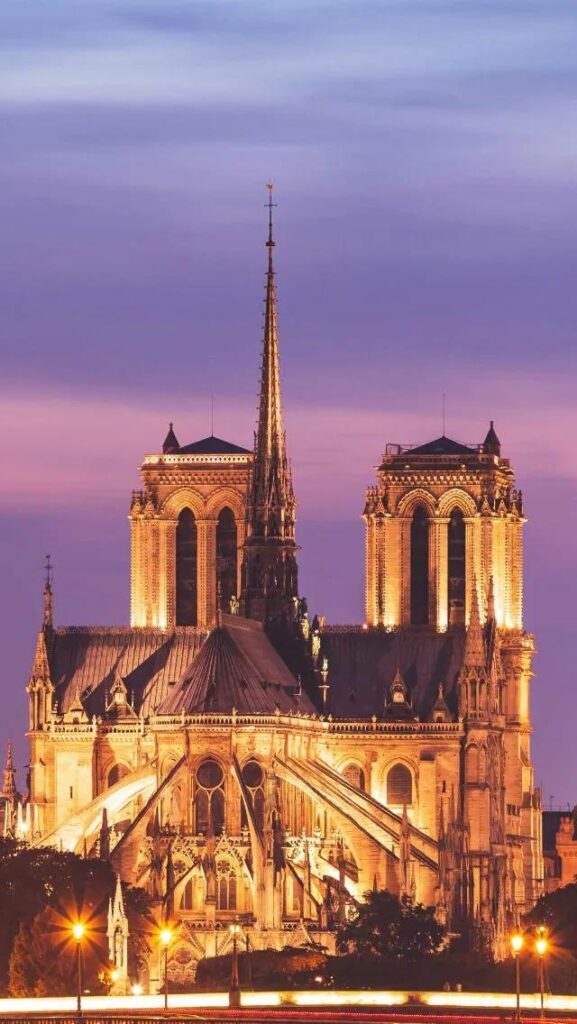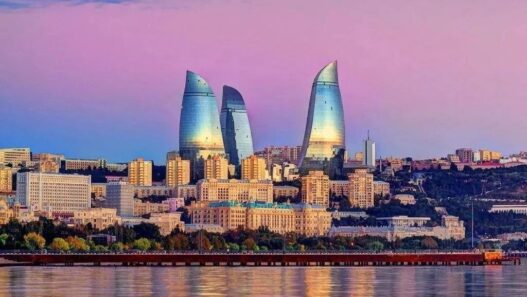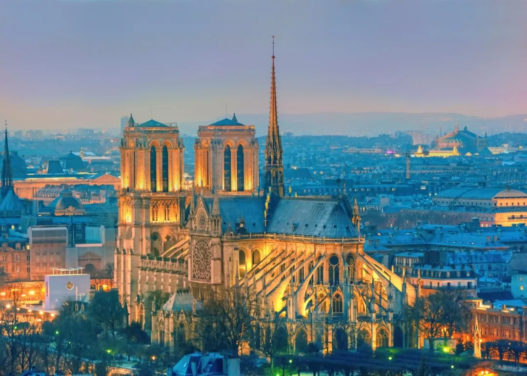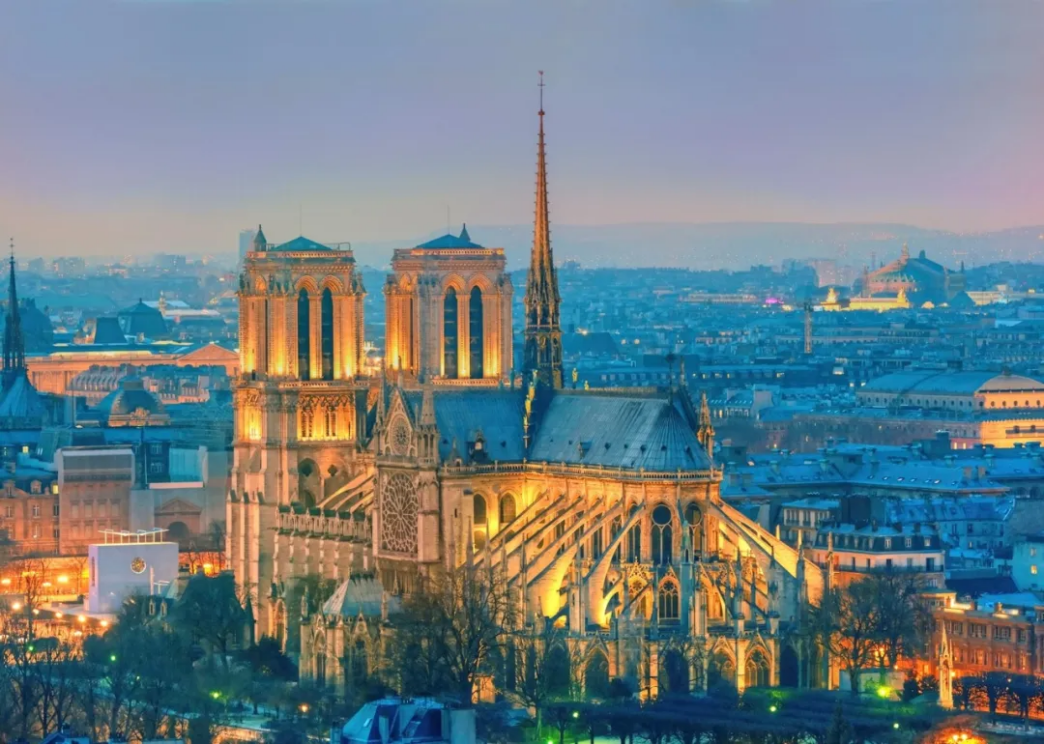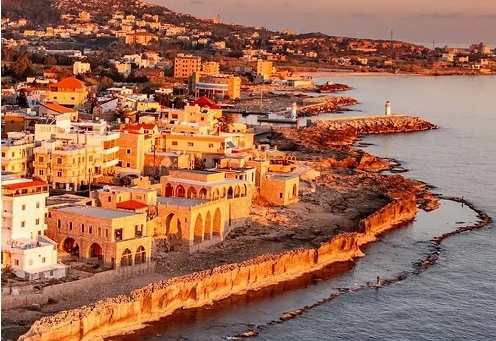On December 8, 2024, Notre-Dame Cathedral, which has undergone five years of restoration, officially reopened to the public.
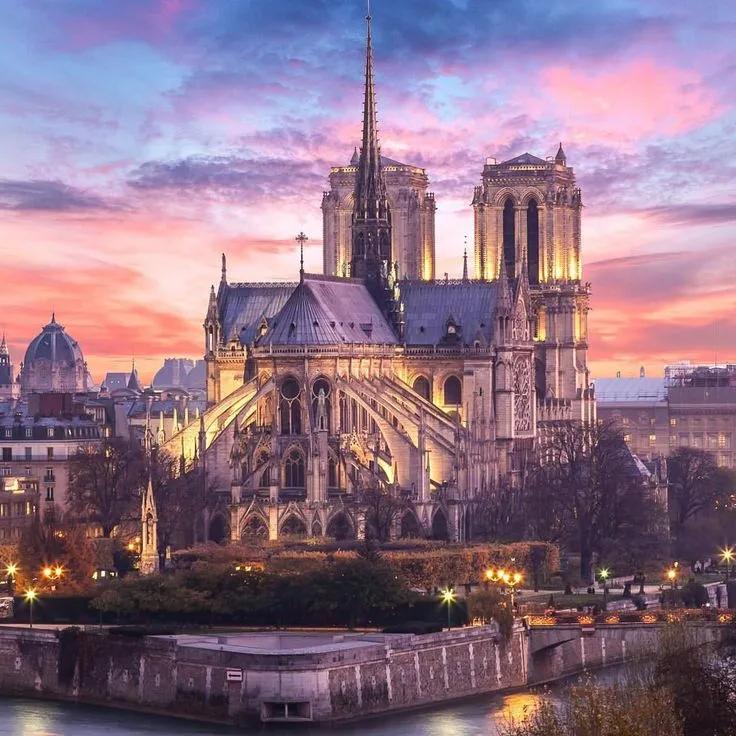
Notre-Dame Cathedral is located in the heart of Paris, France, on the Île de la Cité in the Seine River, facing the Paris City Hall and the Louvre across the river. It is a Gothic Christian church architecture.
Construction of Notre-Dame began on March 24, 1163, and it serves as the cathedral of the Roman Catholic Archdiocese of Paris, one of the most famous Gothic cathedrals in Europe, and was described by the literary giant Victor Hugo in his novel “The Hunchback of Notre-Dame” as a “symphony in stone on a grand scale.”
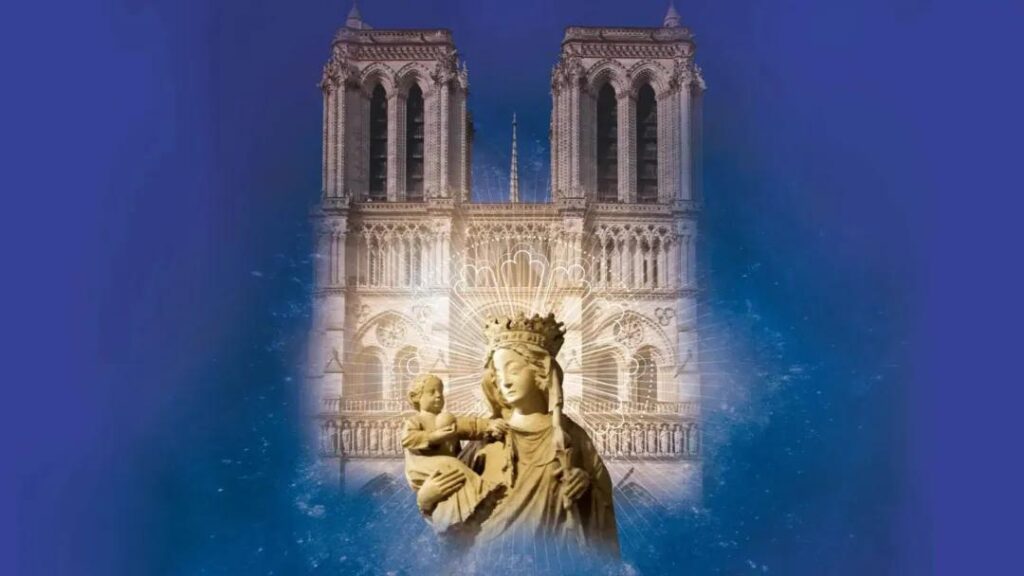
This Gothic structure, which has weathered 860 years of history, is not only one of France’s most representative cultural relics and a World Heritage site, a landmark of European literature and culture, but also a cultural heritage shared by Christianity and all of humanity.
On April 15, 2019, during maintenance, Notre-Dame Cathedral was struck by a fire, tearing at the hearts of many. The damage caused by the fire was heart-wrenching.
Now, after more than five years of intensive reconstruction, Notre-Dame Cathedral finally reopens to the world. We now have the opportunity to witness the rebirth of this great building and feel its endless charm through the vicissitudes of history!
The Tragedy of the Fire
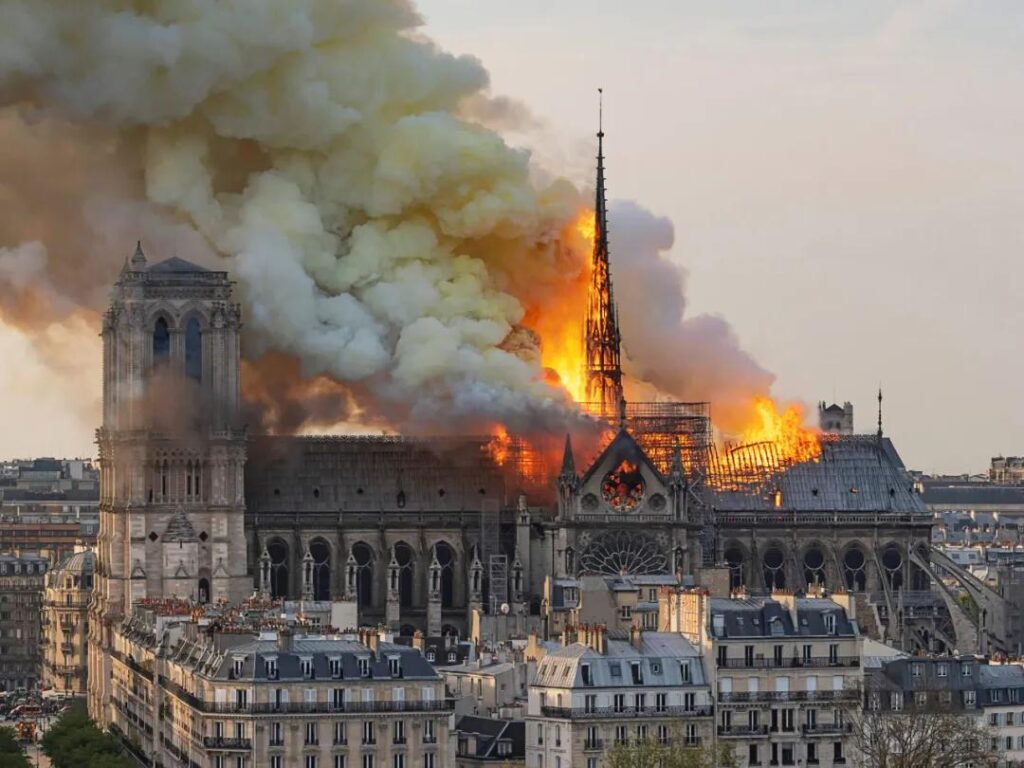
The fire at Notre-Dame Cathedral happened on an ordinary spring evening. It initially started due to an electrical fault within the building. Over time, the flames spread rapidly and consumed the magnificent Gothic church.
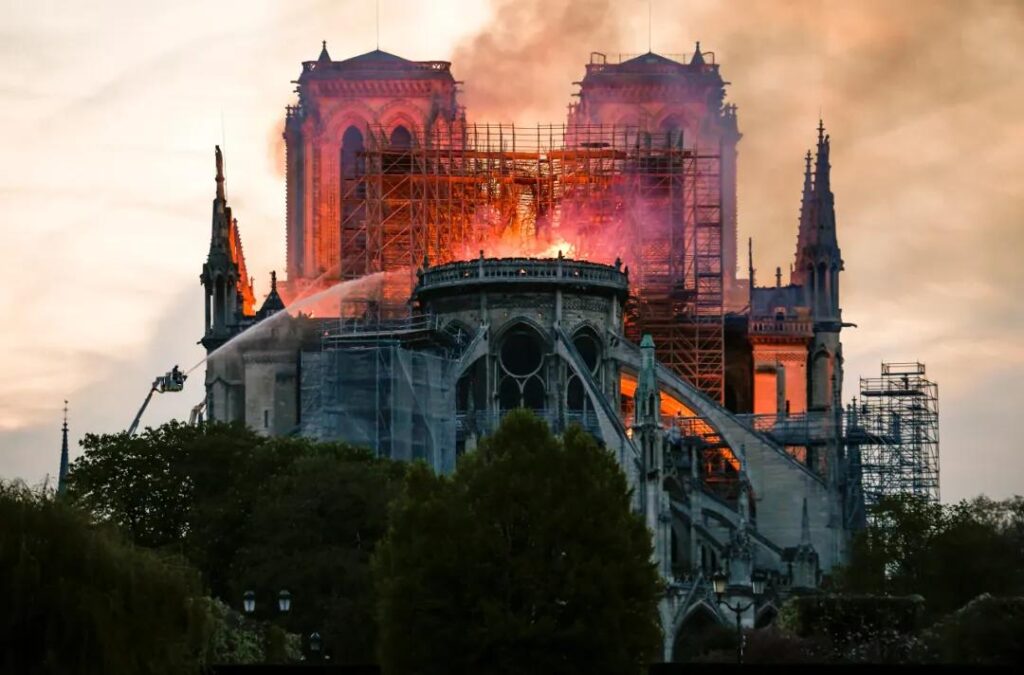
The iconic spire of Notre-Dame collapsed in the roaring flames, the wooden roof was almost entirely reduced to ashes, collapsing along with the stone vaults into the nave. Fortunately, the main structure of the cathedral was preserved.
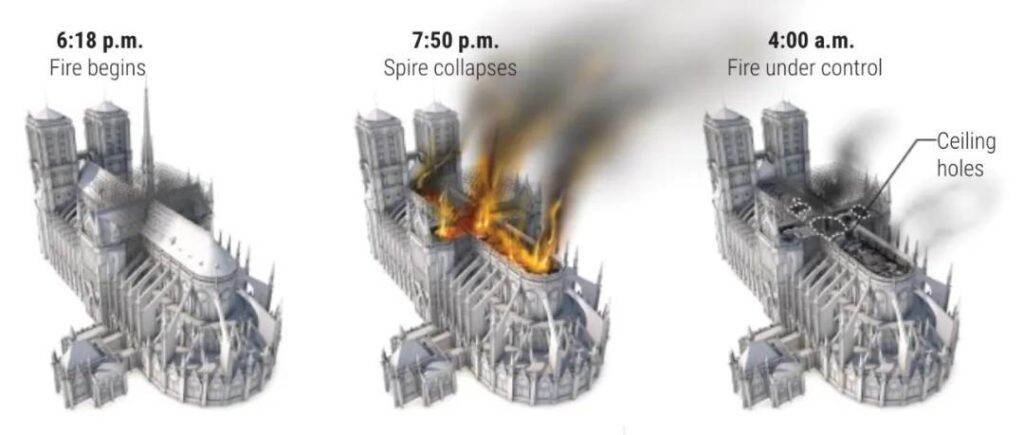
Firefighters took 15 hours to extinguish the blaze, but Notre-Dame was left in ruins. People who witnessed this tragedy were heartbroken, gathering in front of the cathedral to silently pray for this symbol of faith and culture.
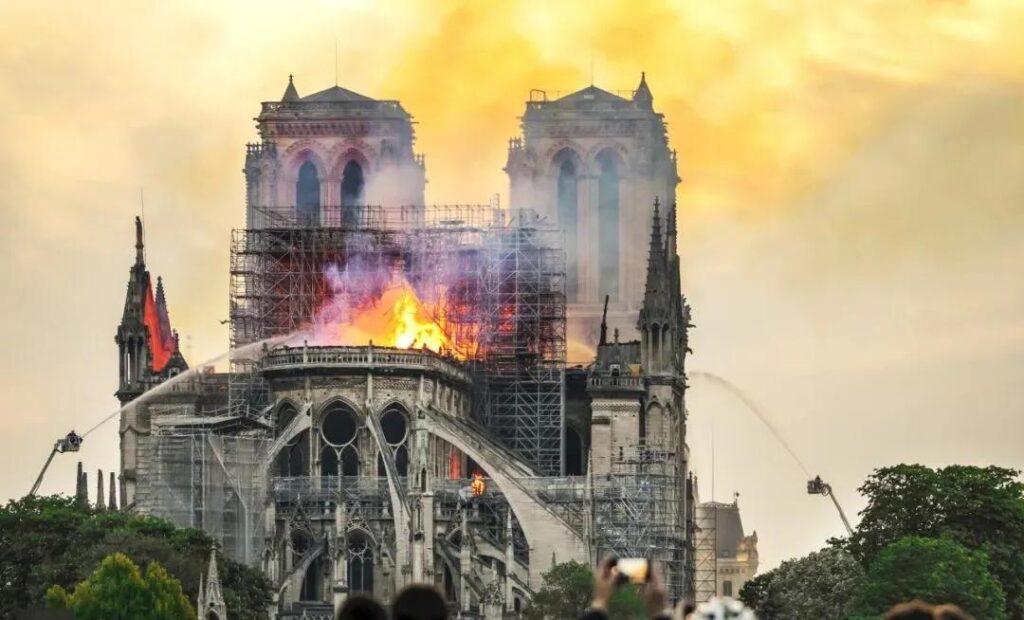
French President Emmanuel Macron, in his speech after the disaster, promised to rebuild the cathedral within five years. Donations poured in from all sectors. According to Reuters, over 150 countries donated more than €846 million.
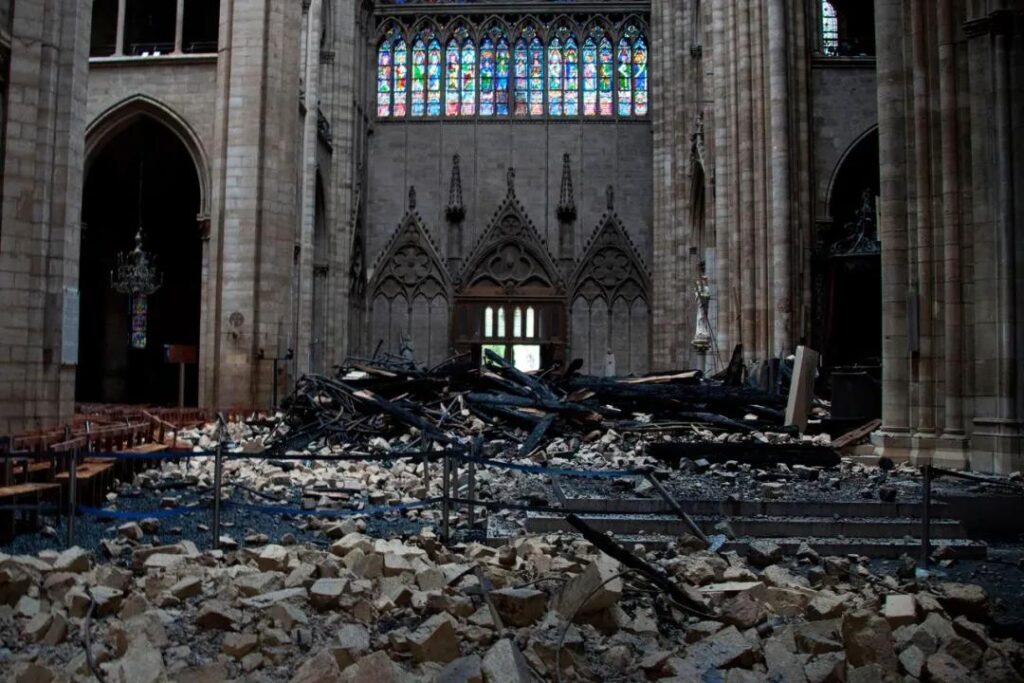
As a global focal point, the restoration of Notre-Dame also sparked various ideas and debates. An organization launched a global call for submissions, receiving 226 innovative proposals from architects and designers in 56 countries.
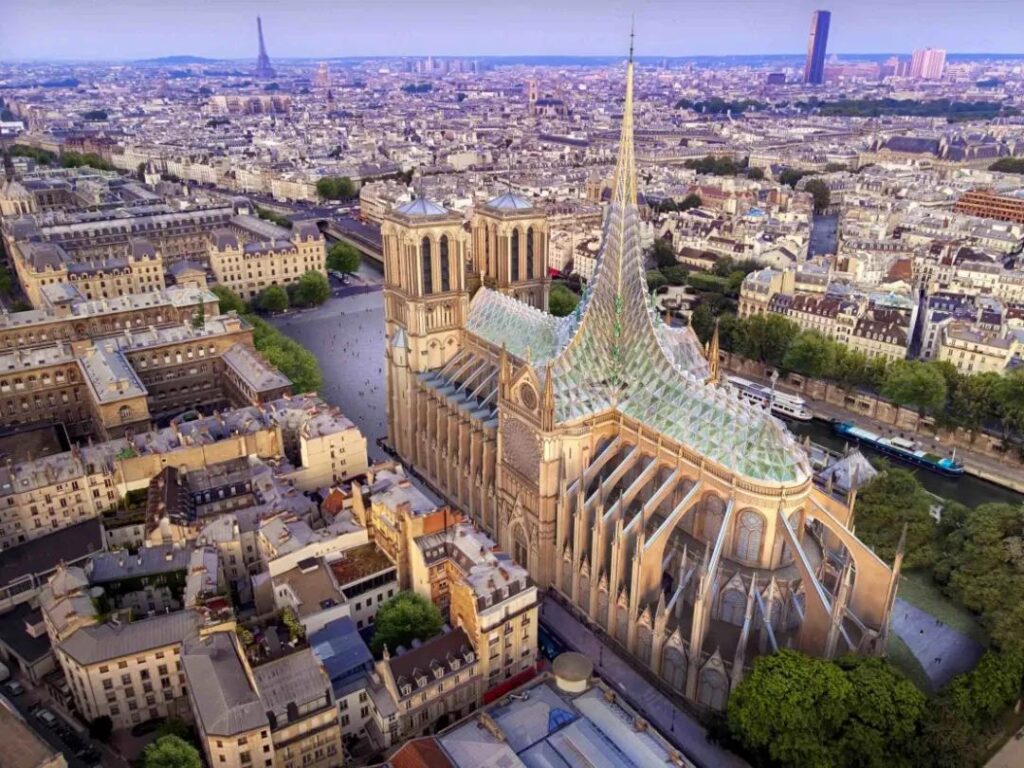
After much discussion and negotiation, the French government decided that the restoration of Notre-Dame would be “faithful to the original architecture.”
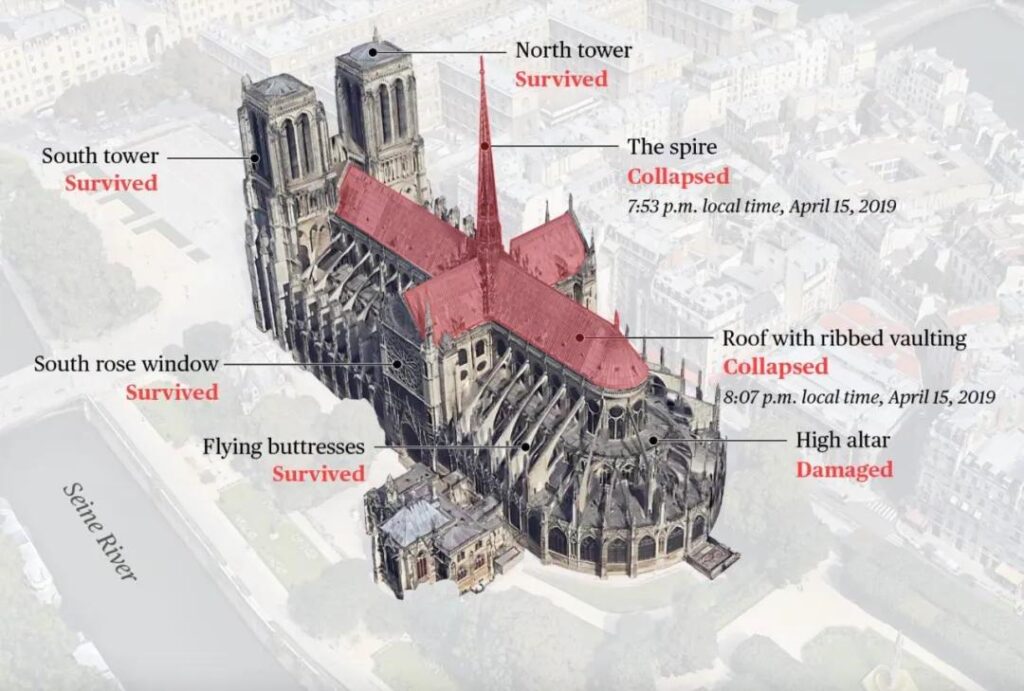
Disaster Assessment and Debris Clearance
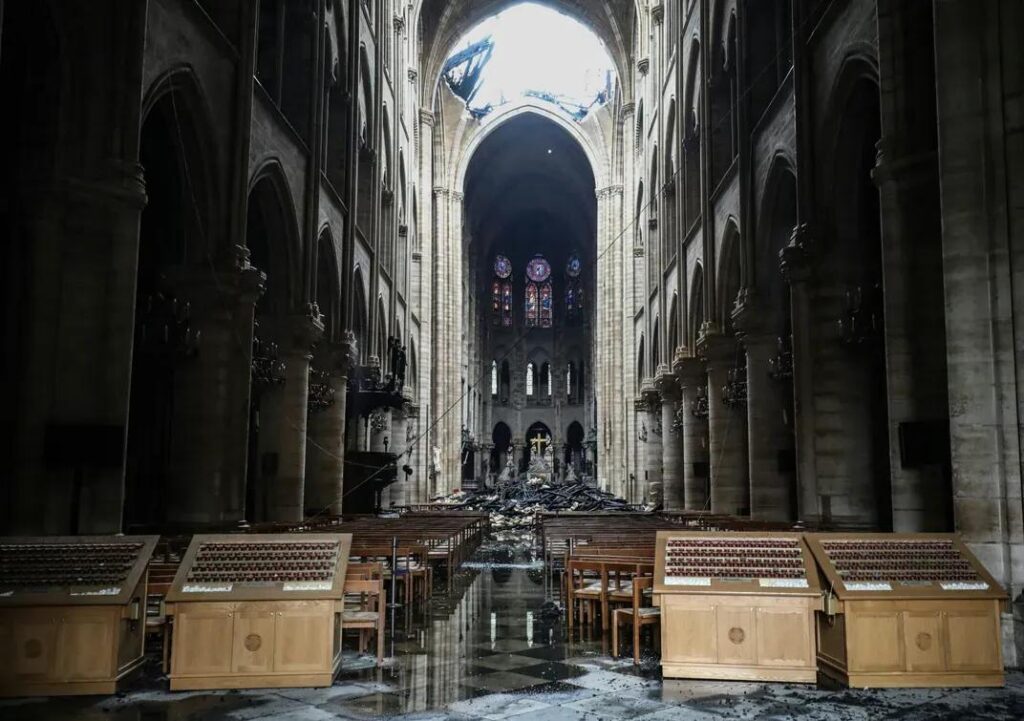
The primary task after the Notre-Dame fire was to protect the structural integrity and assess the damage.
According to The New York Times, the initial phase of restoration focused on protecting the building’s foundation, including erecting dense scaffolding around Notre-Dame to ensure safety and support subsequent restoration work.
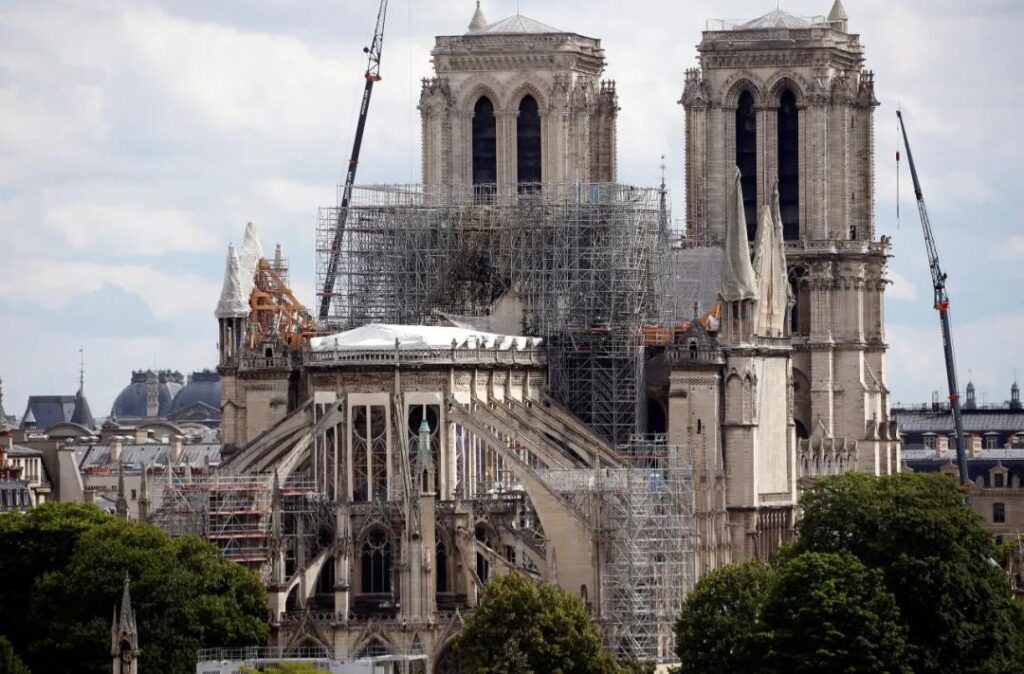
The cleanup and damage assessment of Notre-Dame included internal furniture, sculptures, paintings, and the cleanup of toxic residues and burnt fragments left by the melted lead roof.
To prevent damage from falling debris, protective nets were installed inside and outside the cathedral, with protective measures continuing until March 2021, when the actual restoration phase began.
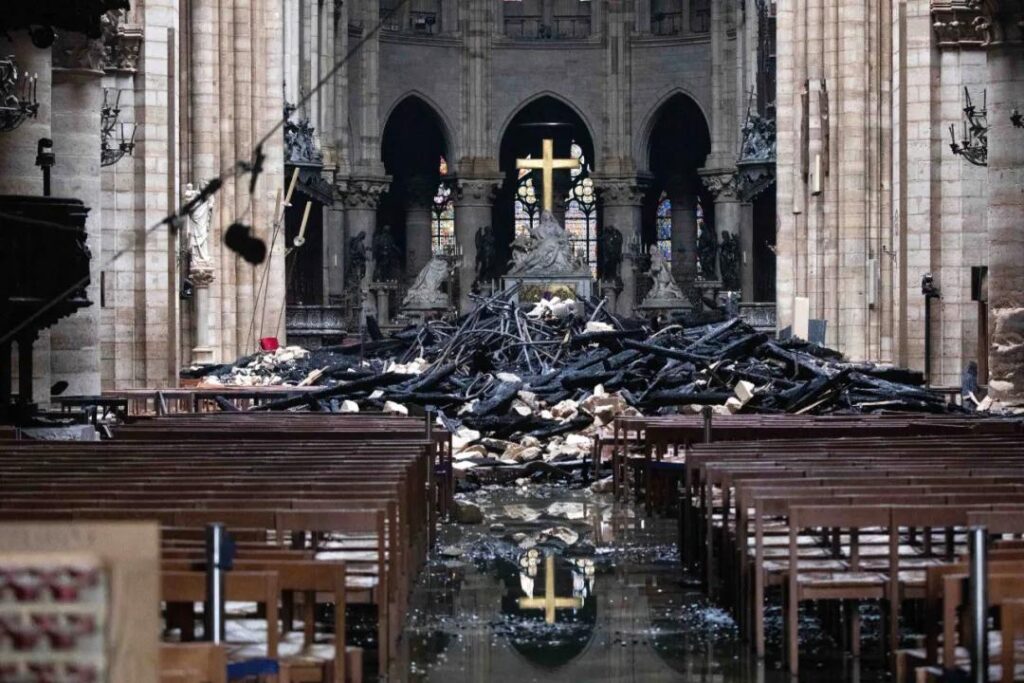
An international team from 15 disciplines was involved. Every day, over a thousand top architects, engineers, archaeologists, scientists, and art historians conducted detailed surveys of the cathedral’s interior and exterior spaces.
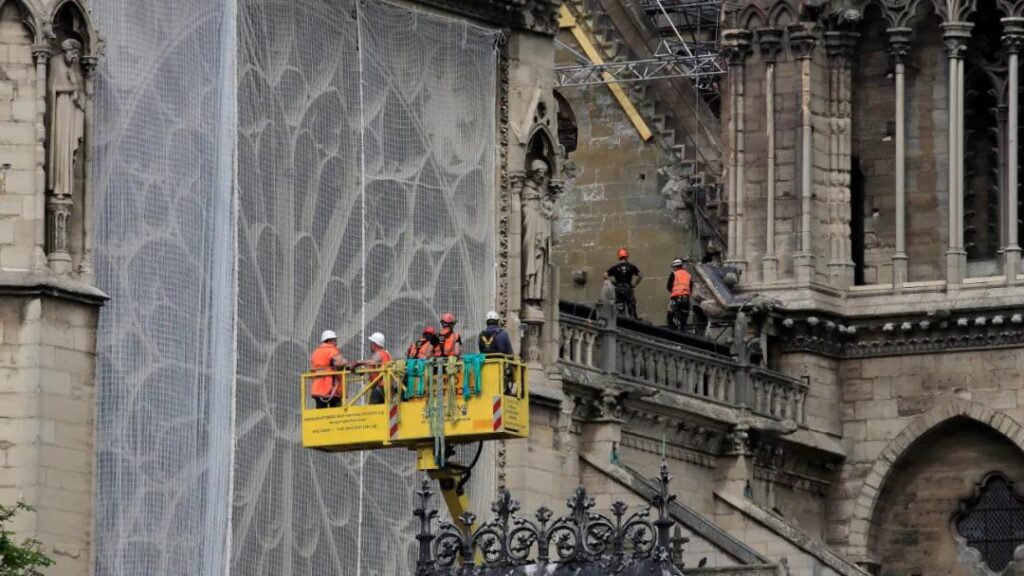
Experts meticulously studied every detail of Notre-Dame, from the roof and spire to the walls and internal decorations, ensuring all restoration materials and techniques matched the original structure to maintain historical authenticity.
On April 15, 2021, on the second anniversary of the fire, a wooden model of the damaged parts of the cathedral was unveiled. The next day, the reconstruction work officially started.
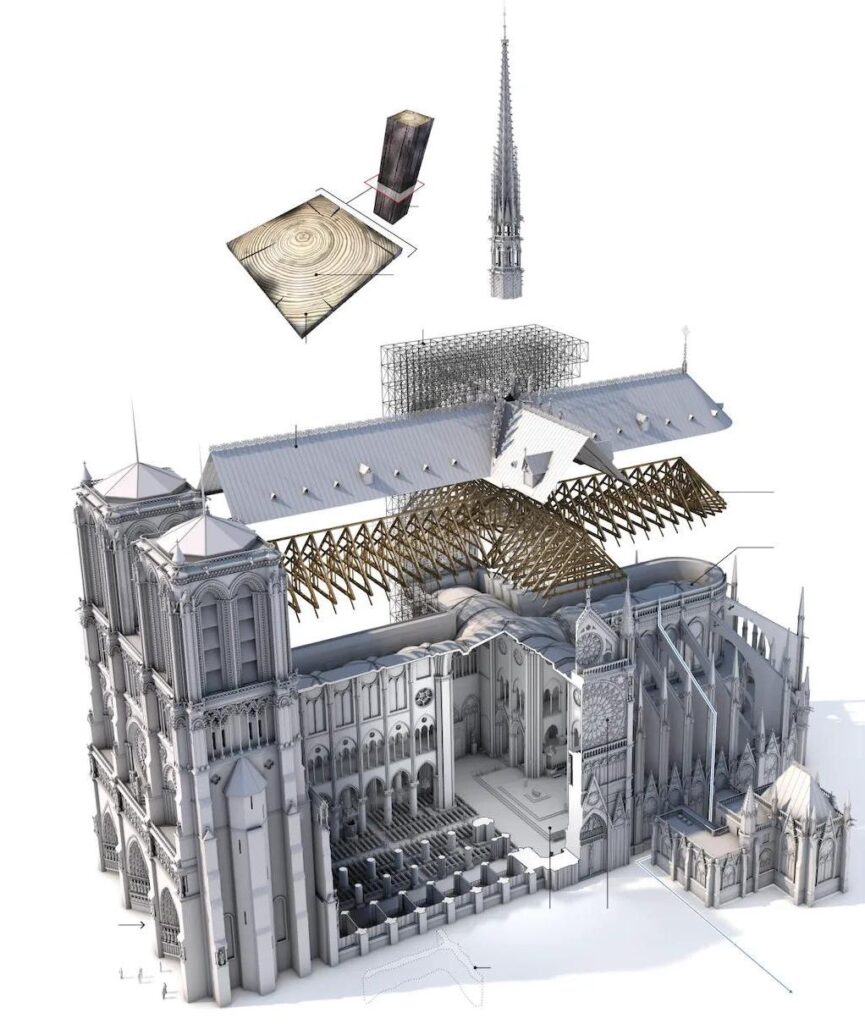
Restoration and Reconstruction — Roof and Spire
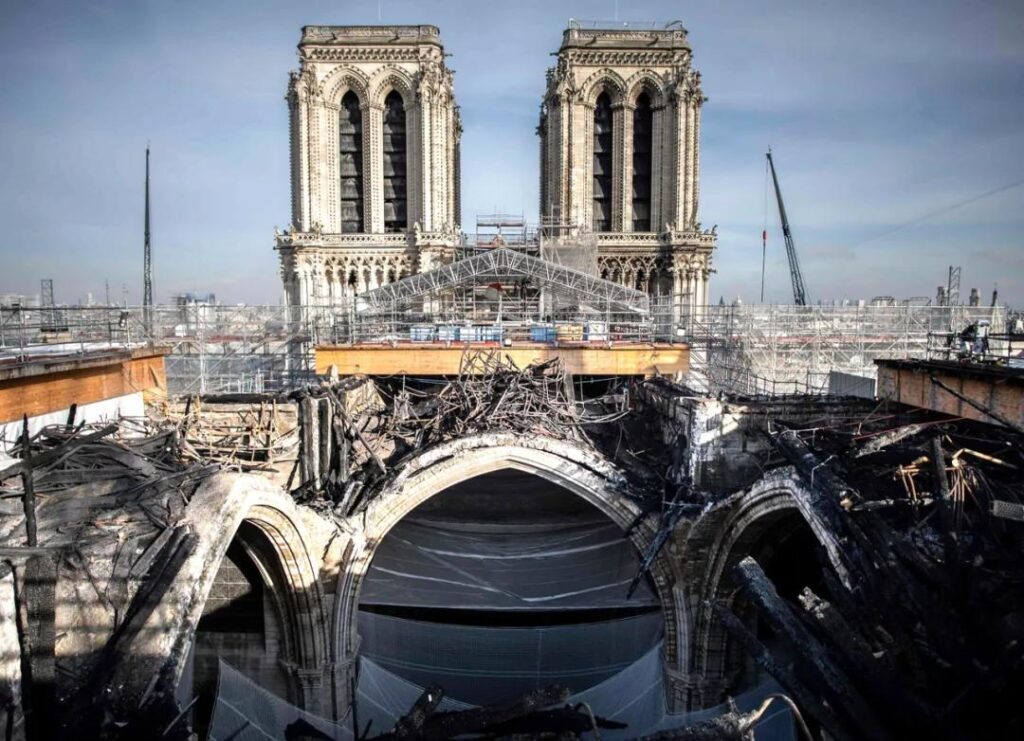
The reconstruction of Notre-Dame’s roof and wooden framework was one of the most challenging parts of the restoration process.
As one of the most severely damaged parts in the fire, the original roof, supported by wooden structures, was called “the forest” due to its unique construction using about 1,300 wooden beams, many dating back to the 12th to 13th centuries.
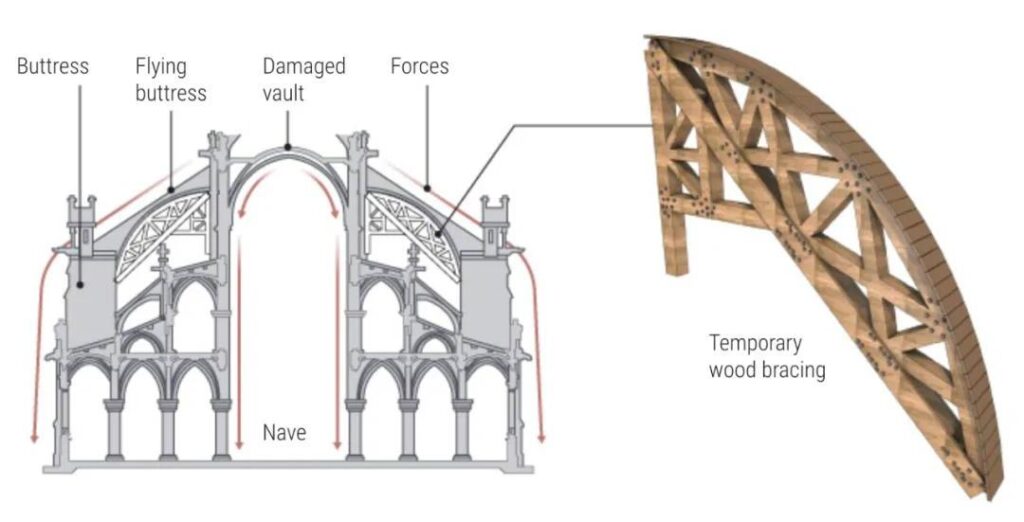
Thus, one of the main challenges in the restoration was the shortage of building materials. According to The Guardian, to maintain historical consistency and stylistic unity, the reconstruction used the same types of wood and structural supports as the original.
This required 1,000 oak trees, each between 150 and 200 years old. However, by early 2021, only eight suitable oaks had been found. Over time, through a global search and procurement, the required oak was finally selected.
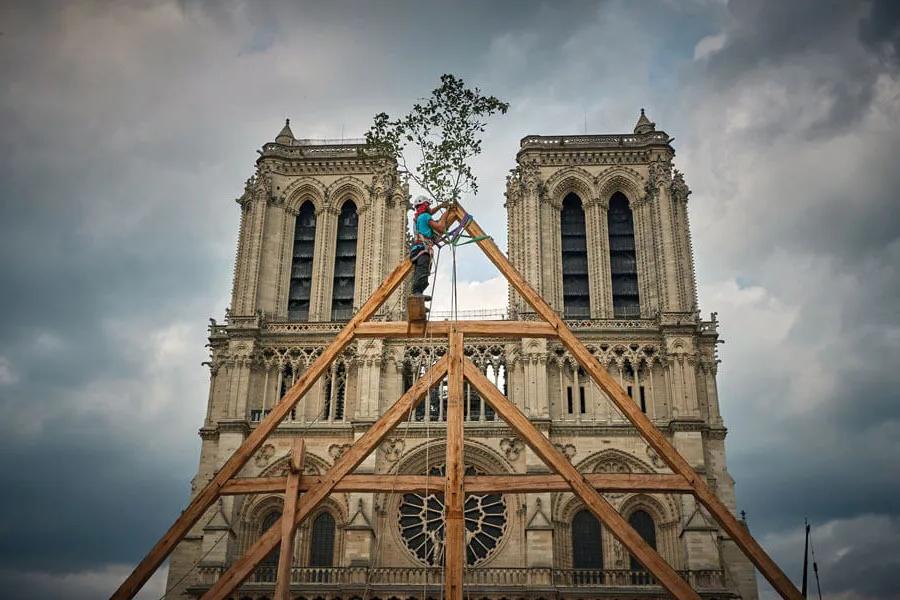
These oaks were then transported to 45 wood processing factories in France for initial cutting and drying. Skilled carpenters were also summoned to use “ancient techniques” with traditional tools and craftsmanship for manual carving.
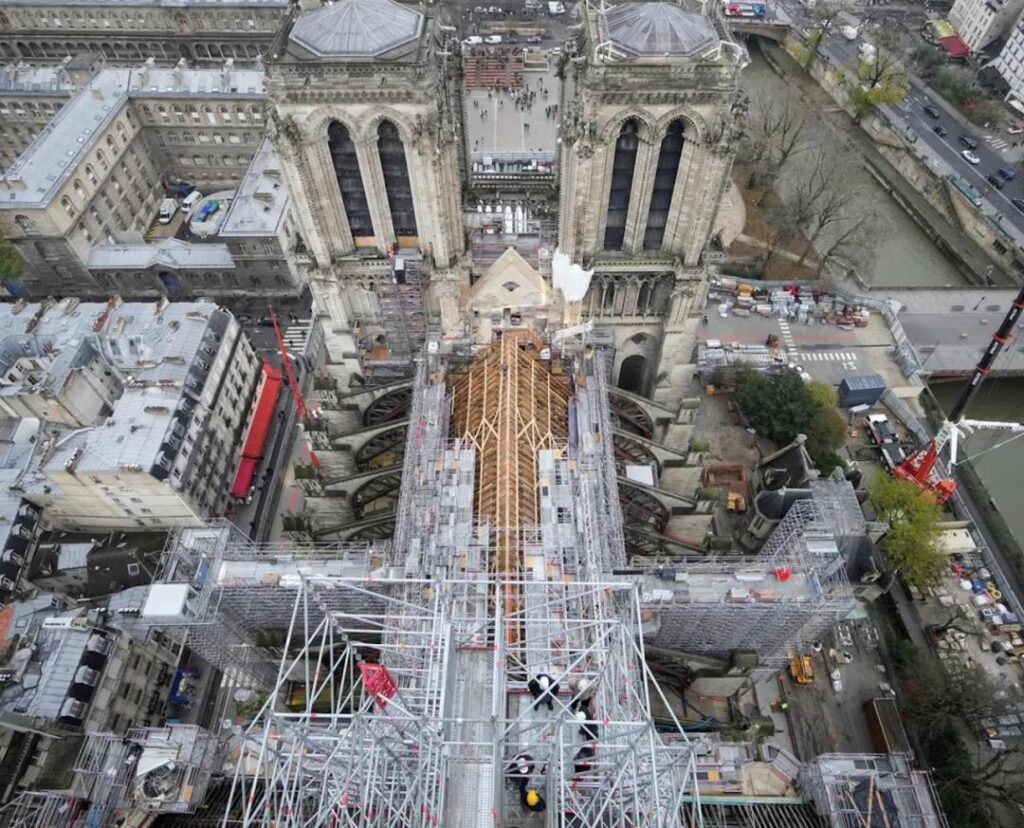
The 96-meter-high spire, the most iconic part of Notre-Dame, was completely destroyed in the fire. The new spire was designed to replicate the original, using the same stone and plans to install a new cross at its top.
On July 12, 2023, a crane lifted a massive oak truss to be reinstalled at the top of Notre-Dame. The spire was reproduced exactly as the original, using copper for gilding: oak for the internal structure, and lead for covering and decorating the exterior.
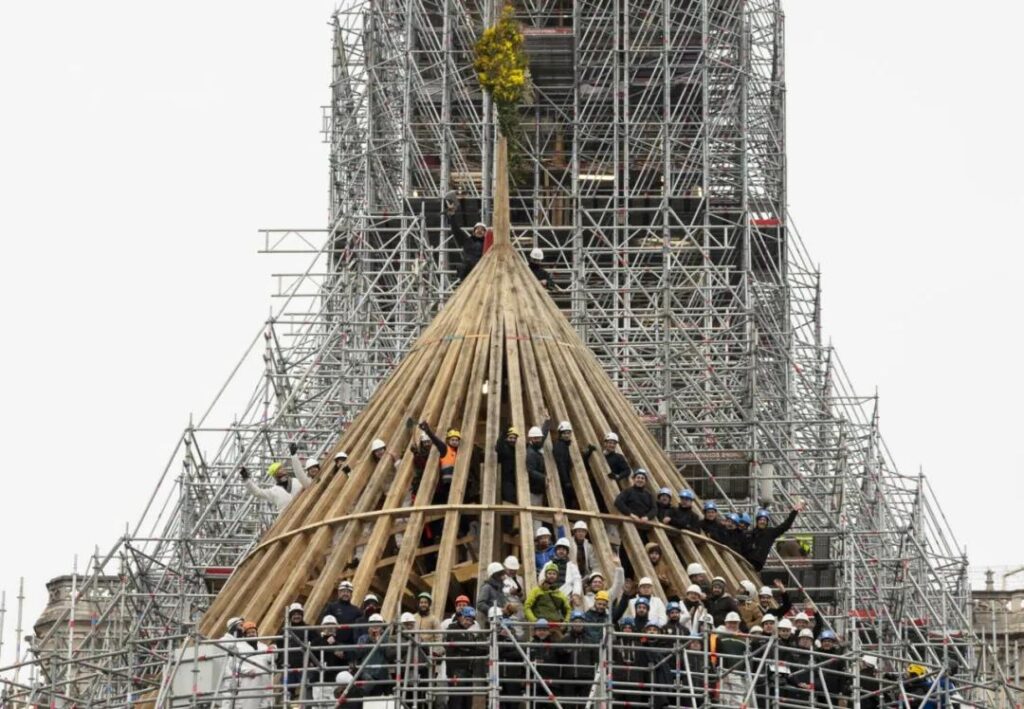
The golden weathervane at the top of the spire, designed by architect Philippe Villeneuve, symbolizes the rebirth of Notre-Dame. Inside, a sealed device records the names of those who contributed to the reconstruction of Notre-Dame.
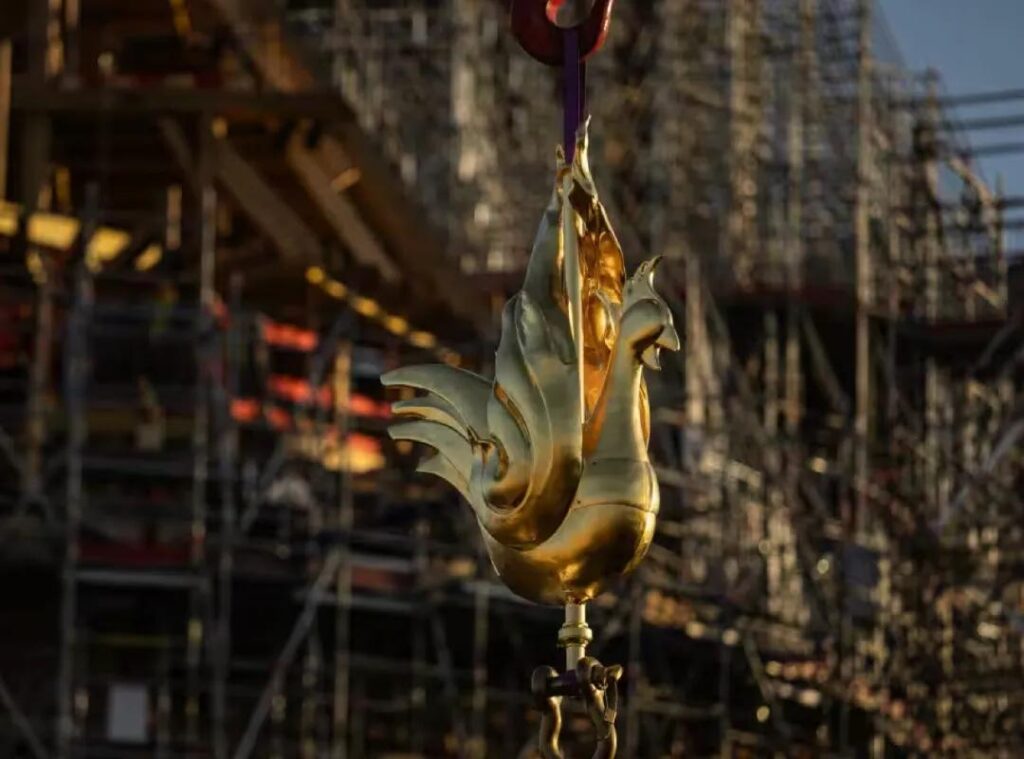
The reinstallation of the spire not only restores the cathedral’s appearance but also symbolizes the revival of this historic building.
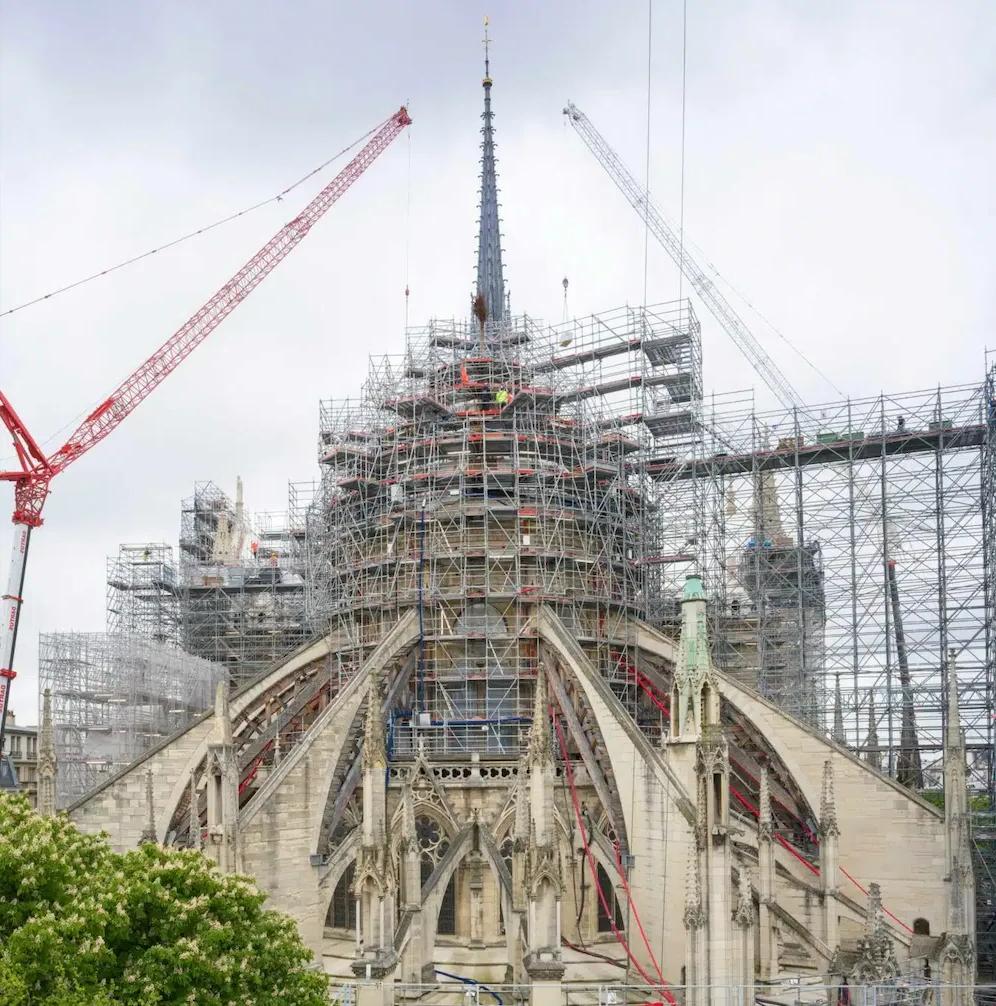
Restoration and Reconstruction — Walls and Colonnades
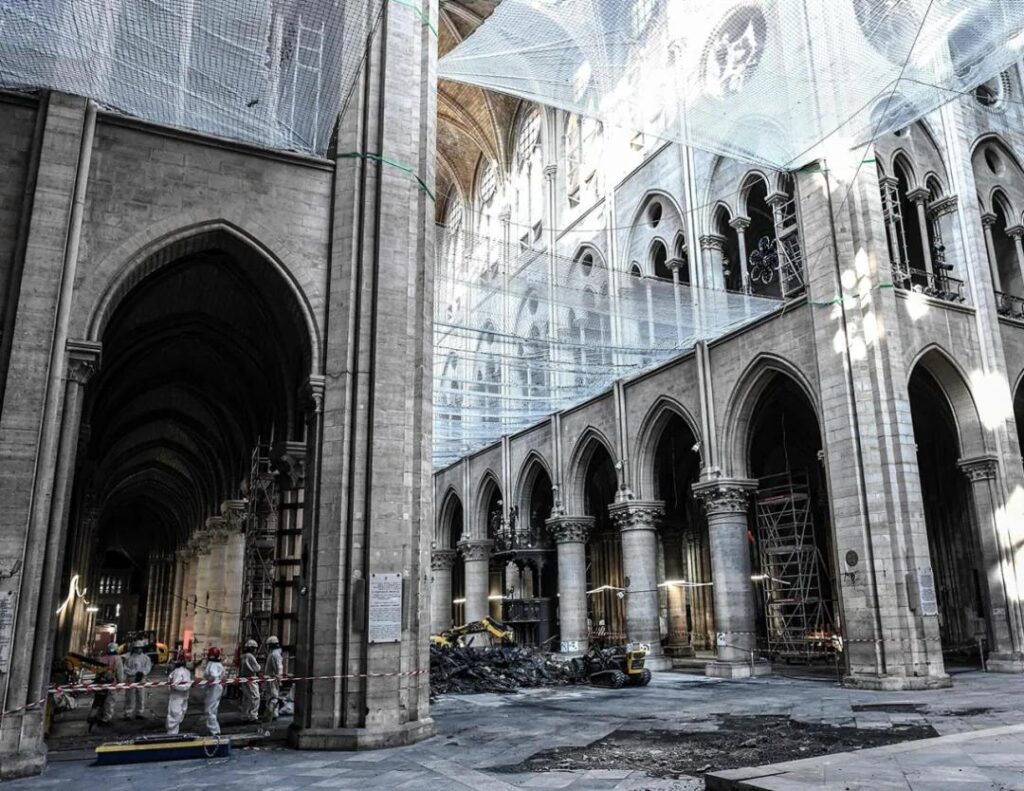
Parts of the interior walls and columns of the cathedral were affected by smoke and heat from the fire and required thorough cleaning and restoration.
The professional restoration team first used powerful vacuum cleaners to remove toxic dust released when the lead roof melted, smoke stains, and ashes, then sprayed a layer of latex on the walls to clean the dirt from the stone pores.
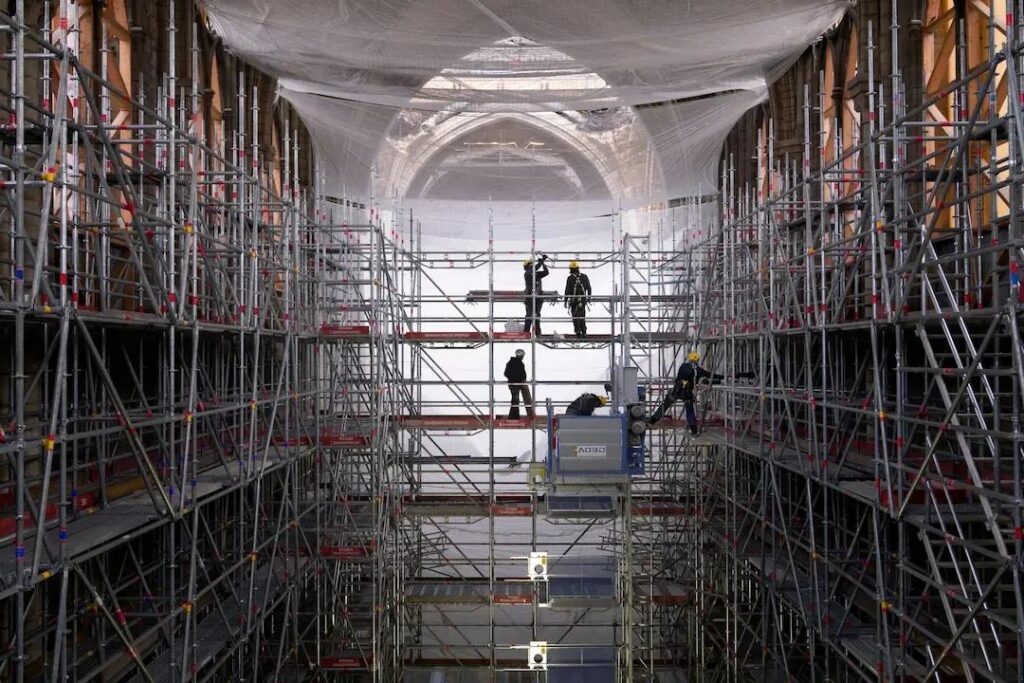
To avoid damaging the original stone walls and colonnades as much as possible, this process was very meticulous, requiring multiple layers of cleaning to restore them to their original state.
Three years after the fire, the thick layer of soot covering approximately six football fields of stone walls was largely cleared.
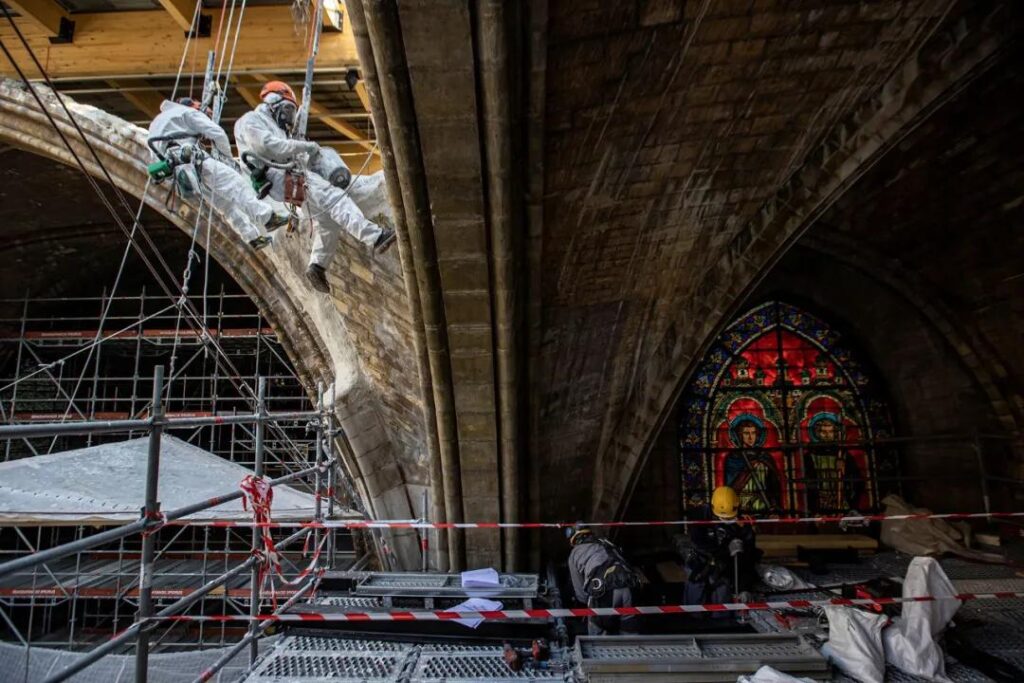
Not only was the fire-induced dust removed, but also centuries of accumulated grime. Now, the cream-colored Lutetian limestone walls of Notre-Dame are renewed, shining alongside the newly painted ochre vaults.
Restoration experts also analyzed samples of the original stone to replace or repair severely damaged parts, ensuring that new materials blend seamlessly with the original structure.
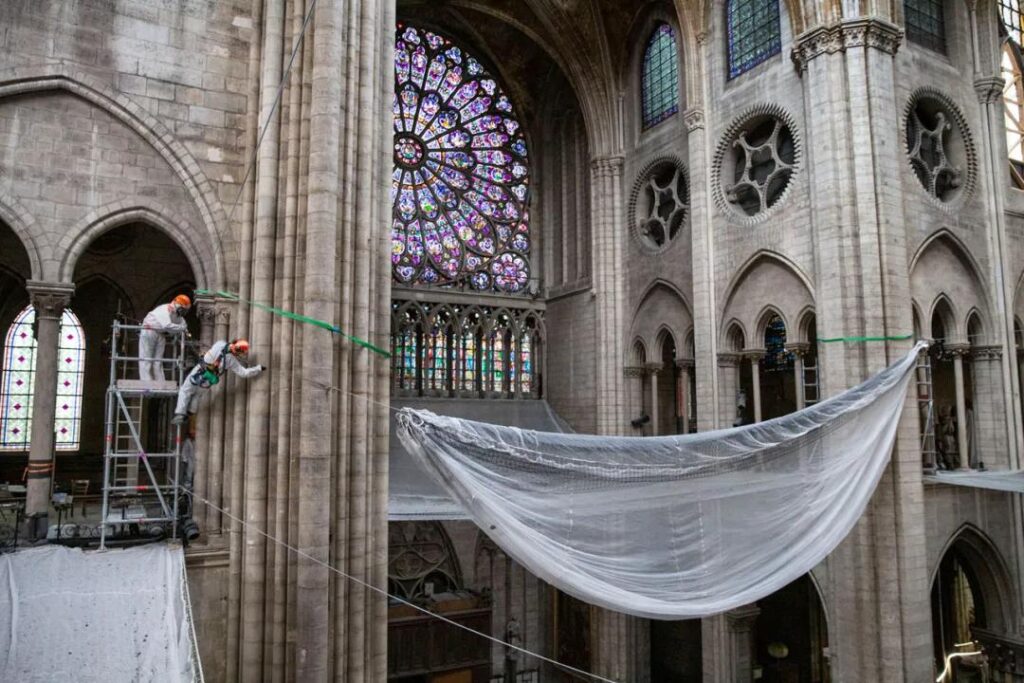
Notre-Dame is world-renowned for its beautiful stained glass windows. Although the iconic rose window survived the fire unscathed, the professional team still dismantled the damaged windows and sent them to glass studios in France and Germany for cleaning.
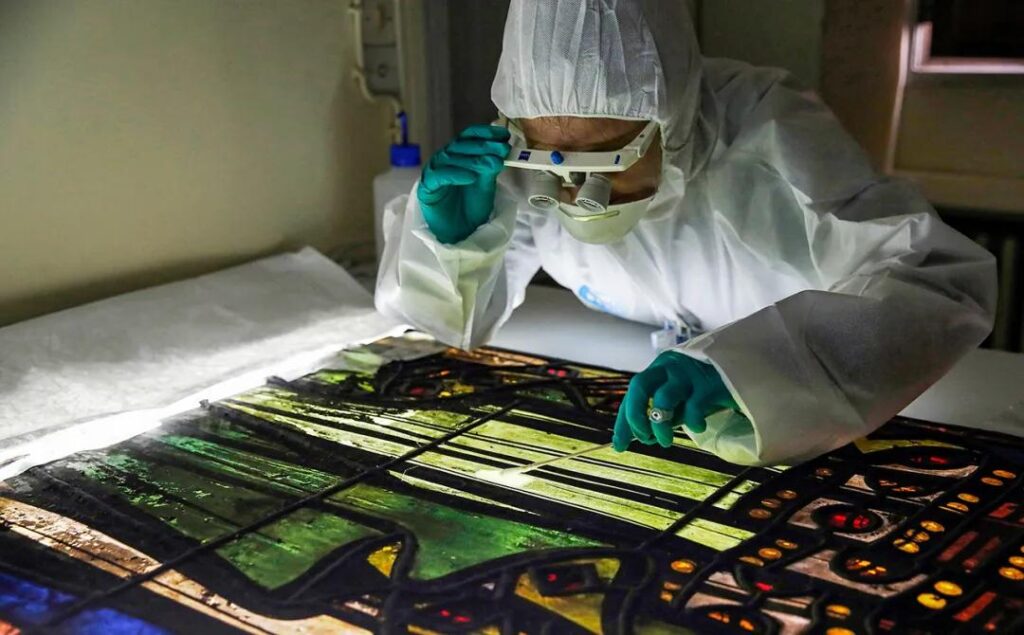
Here, craftsmen examined each piece of glass, reassembling and replacing damaged parts to ensure the windows retained their original style. To prevent future damage, protective covers will be added when reinstalling the windows to shield them from environmental impact.
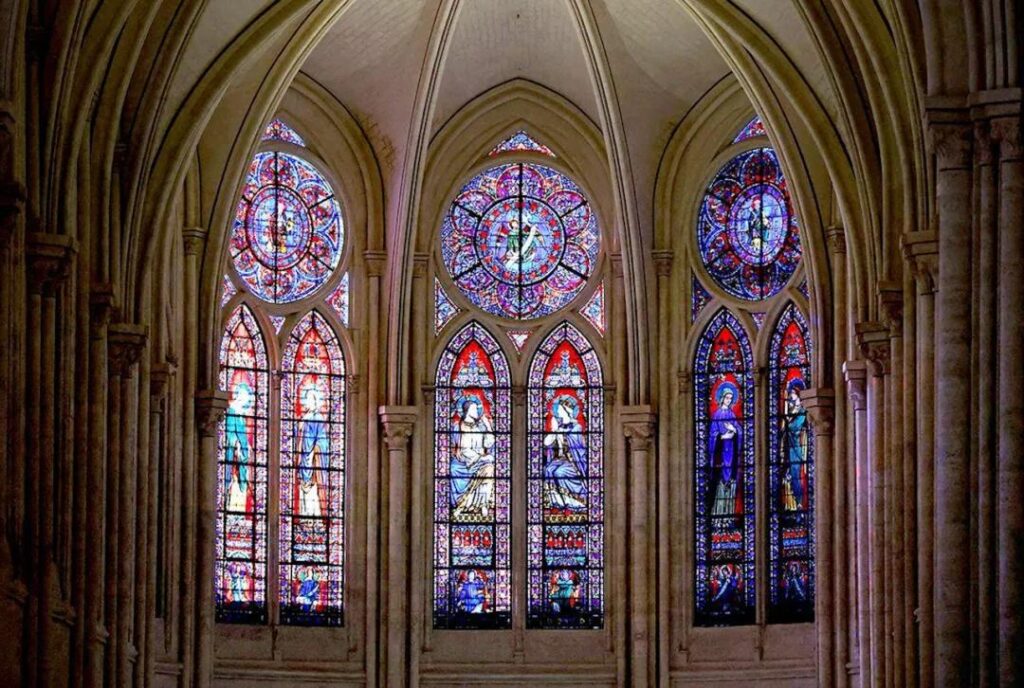
Restoration and Reconstruction — Floors and Ceilings
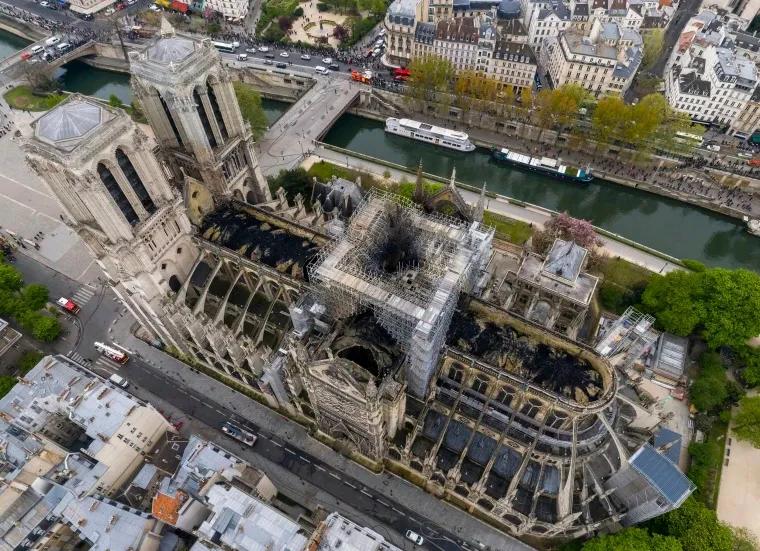
The interior floors of the cathedral are made from various materials, including stone and wood. After the fire, these floors were not only affected by smoke but also possibly warped by water damage.
The professional team conducted a comprehensive inspection of the floors, performing deep cleaning on salvageable parts to remove dirt. Parts that could not be restored were replaced with similar new materials, ensuring a seamless transition between old and new flooring.
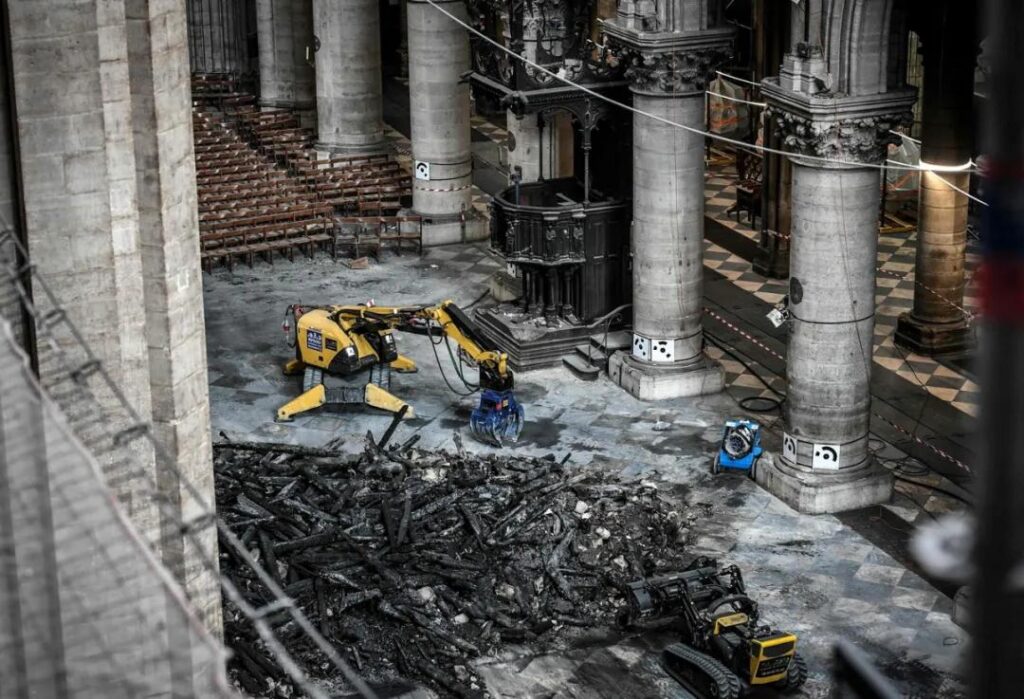
The large holes in the arched ceiling caused by the fire are no longer visible, with new stones carefully pieced together. The high ceilings and the renewed white stone carvings erase the gloomy memories of the destructive fire five years ago.
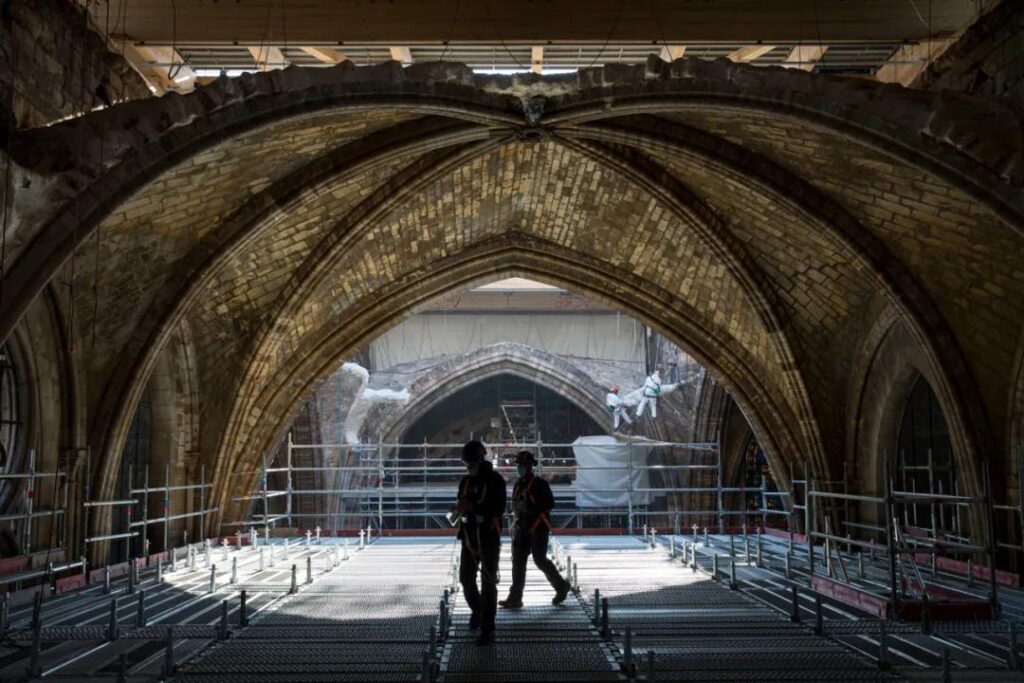
Everything has been refurbished — from frescoes and checkered floors to the bells removed from the belfry, cleaned of lead dust, and restored by the Normandy foundry where they were originally cast. A new high-tech lighting system will also enhance its appearance.
The high vaults and stained glass will cast brilliant light, and the intricate golden angels, gazing down from the rebuilt ceiling, seem ready to take flight once again.
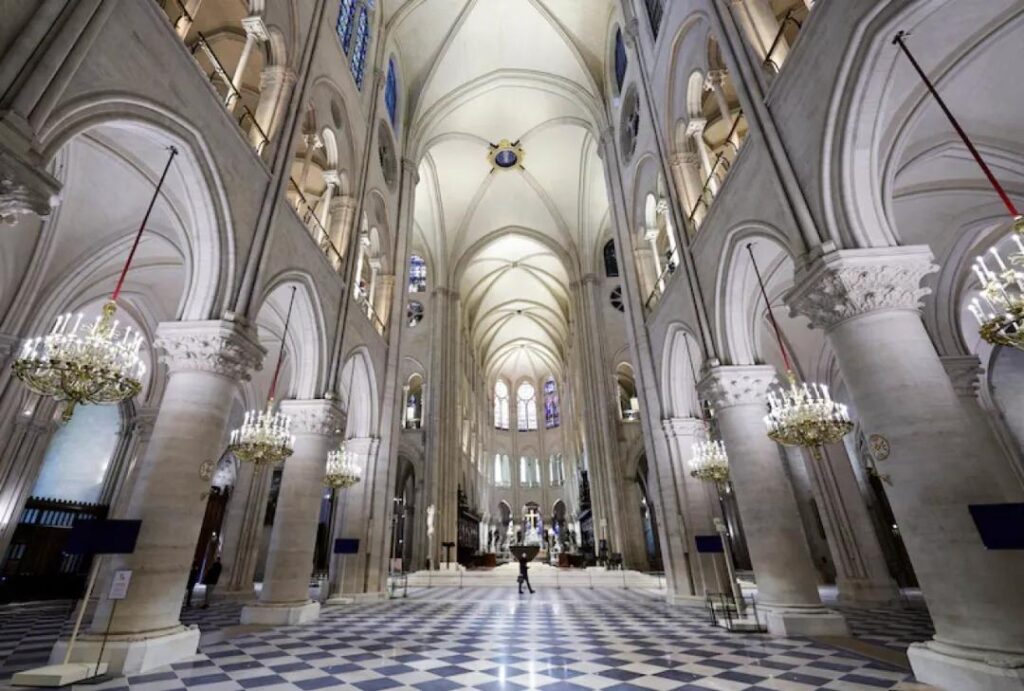
Restoration and Reconstruction — Altar and Statues
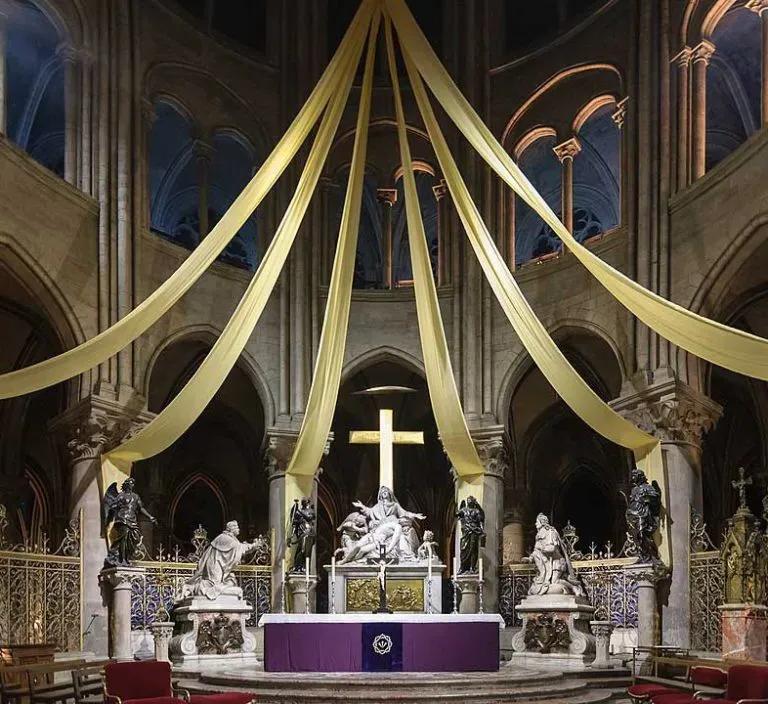
The altar, the most sacred place in the church, was also damaged to some extent by the fire. The restored altar spans over 200 square meters. The chancel is made up of a metal framework with 127 large stone steps and 156 marble slabs.
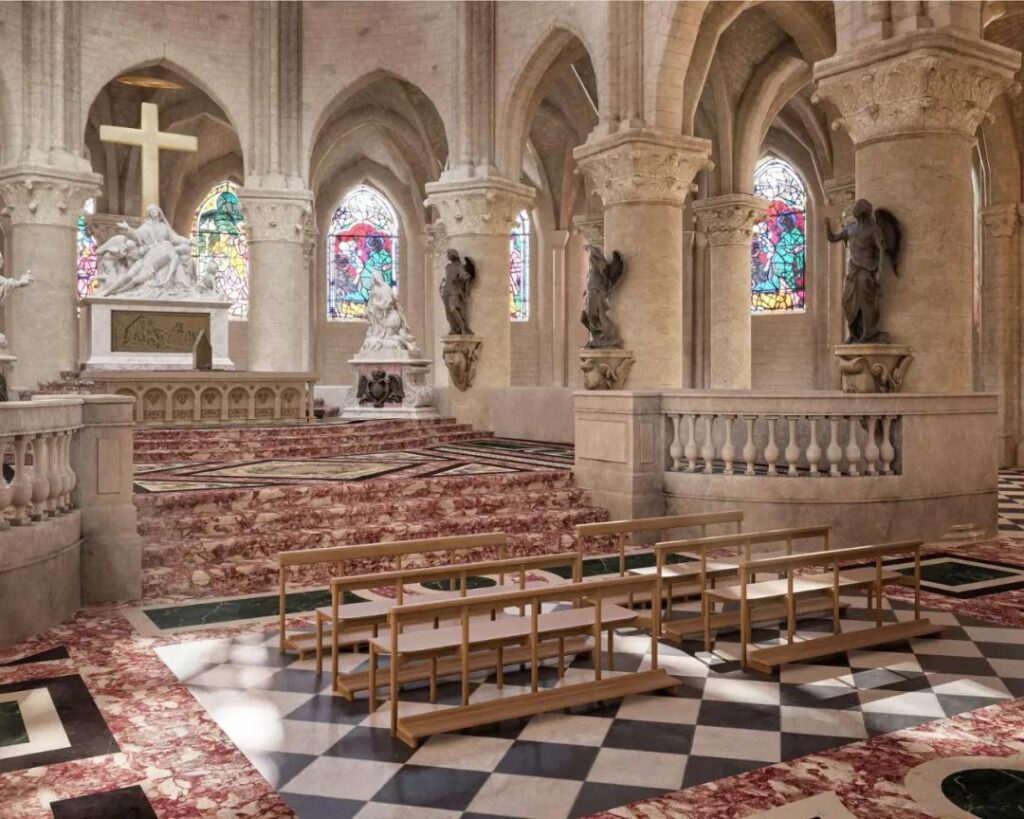
The original sculptures, paintings, and other artworks on the altar were carefully removed and sent to various professional institutions for restoration. During this process, experts tried to preserve the original style while meticulously repairing the damaged parts.
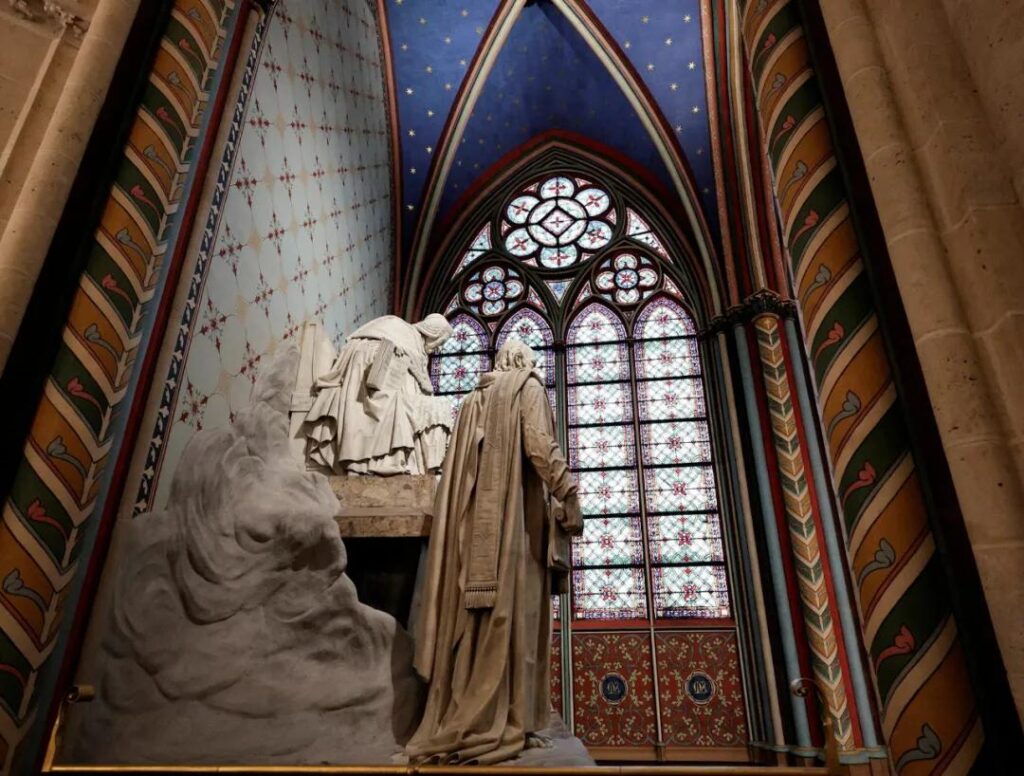
The “Pietà,” one of Notre-Dame’s most important religious relics, survived the fire and was moved to Saint-Germain-l’Auxerrois for protection and restoration. It was returned to Notre-Dame on November 15 and reinstated in its original position.
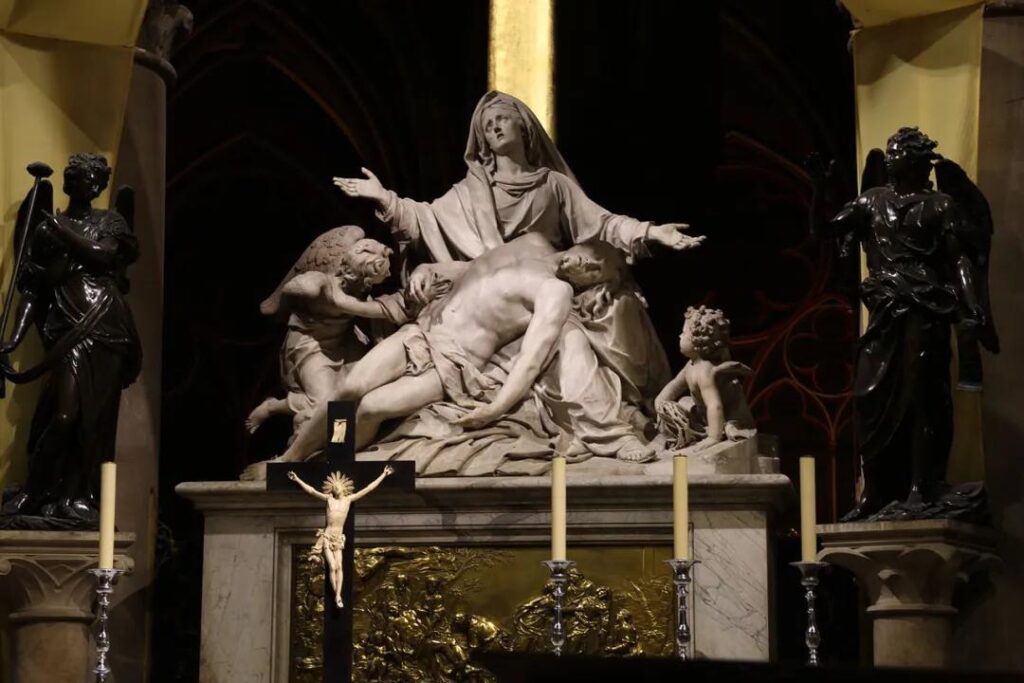
The famous organ with 8,000 pipes, although not burned, was covered in toxic lead dust. It was sent to three organ workshops in Corrèze, Hérault, and Vaucluse for disassembly, cleaning, maintenance, and reassembly.
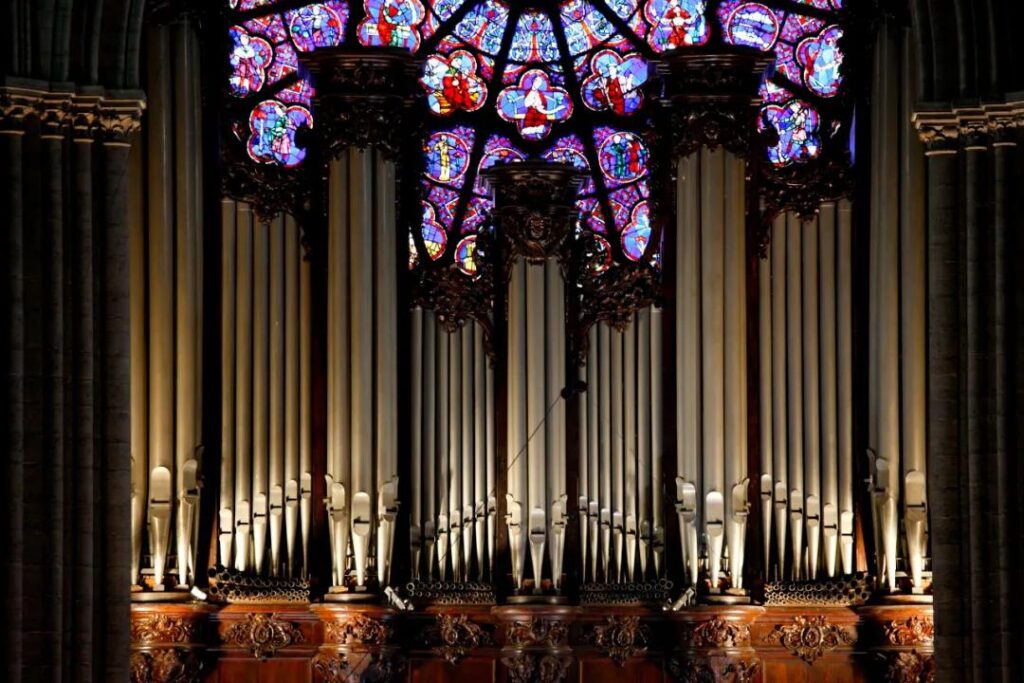
The 22 paintings from the 17th to 18th centuries inside Notre-Dame, along with tapestries and exquisite craft treasures, have all been meticulously restored by artisans and artists from various regions, looking as good as new.
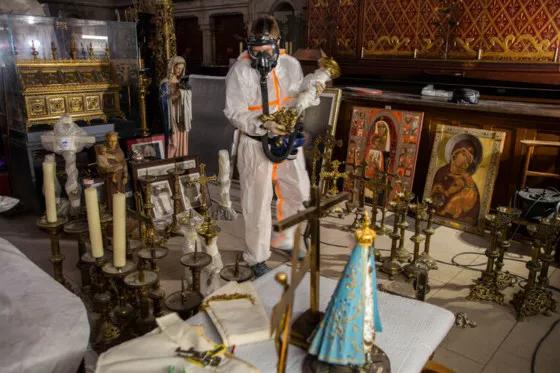
For example, the “Choir Carpet” used for ceremonies, commissioned in the 19th century by King Charles X of France and the largest tapestry in French history, was carefully restored at the Gobelins Manufactory.
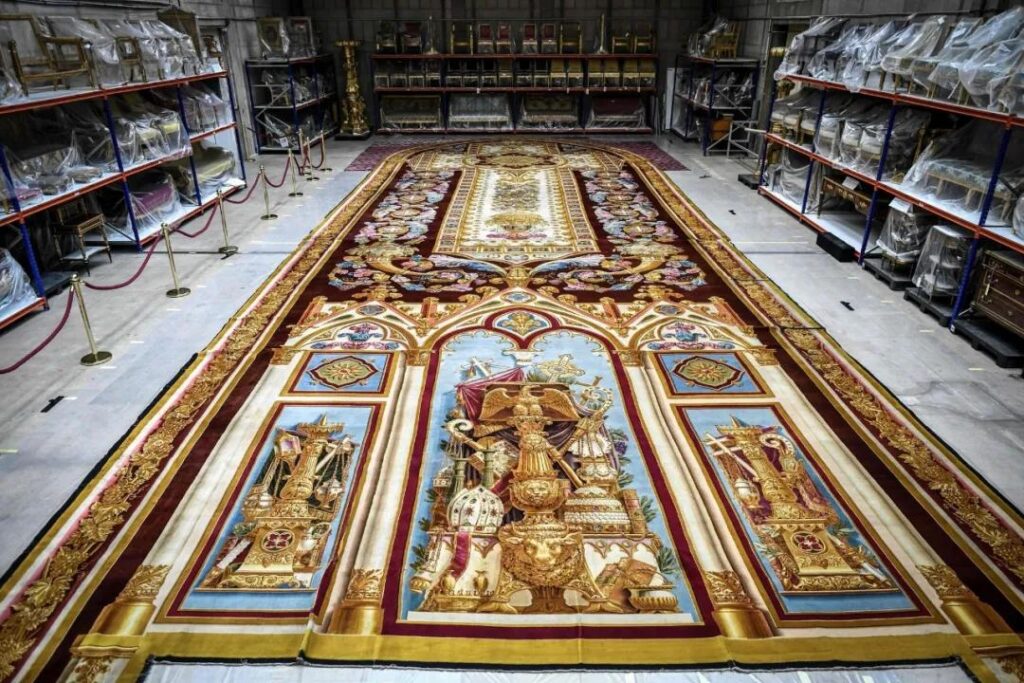
Restoration and Reconstruction — Tradition and Innovation
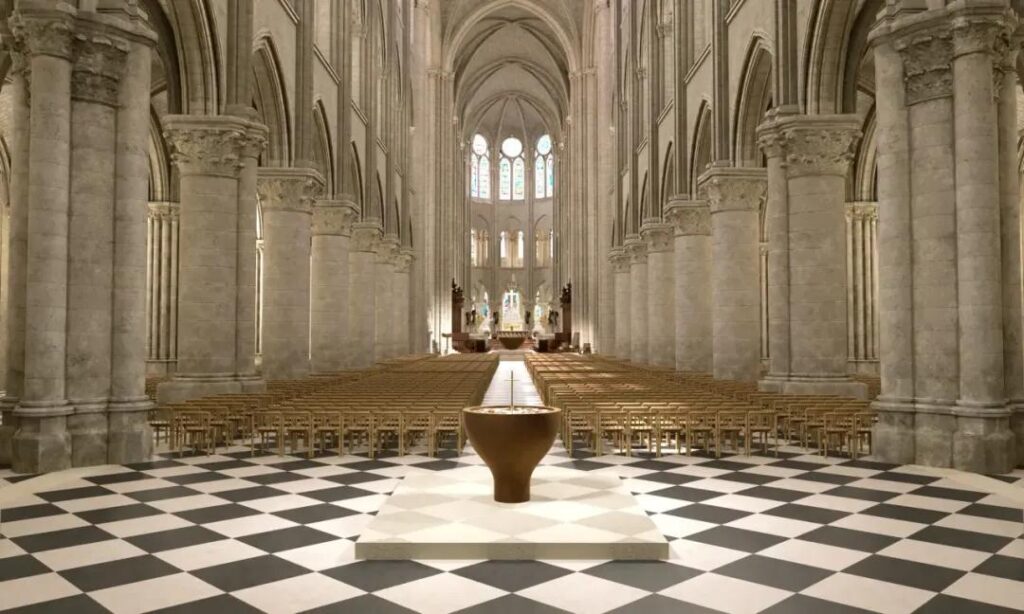
Throughout history, Notre-Dame has showcased the evolution of decorative styles, with art and architecture continuing through space. The massive golden cross by artist Marc Couturier is a fine example of the interaction between past and future.
This cross was installed in 1996, directly below the “Pietà,” flanked by 18th-century statues of Louis XIII and Louis XIV. The medieval architecture from the 12th century stands behind this ensemble, overlooking them.
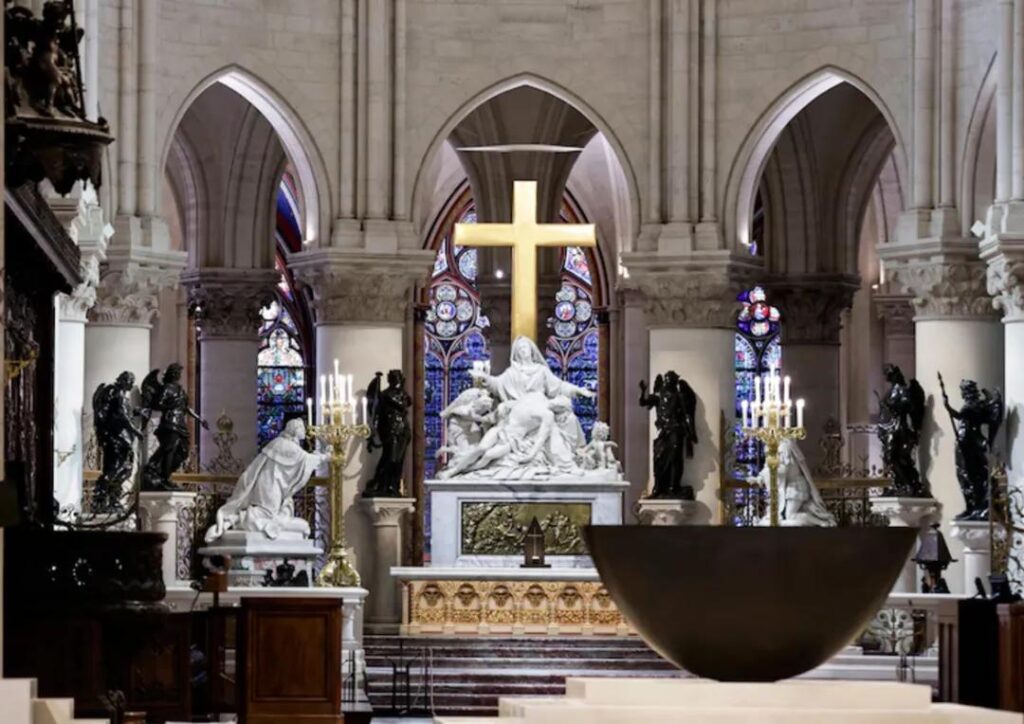
While admiring historical treasures, visitors to the restored Notre-Dame can also appreciate the innovative works of modern artists. Liturgical items designed by Guillaume Bardet include the baptismal font, altar, and bishop’s chair. The bronze material conveys both nobility and simplicity, contrasting and complementing the cathedral’s stone structure.
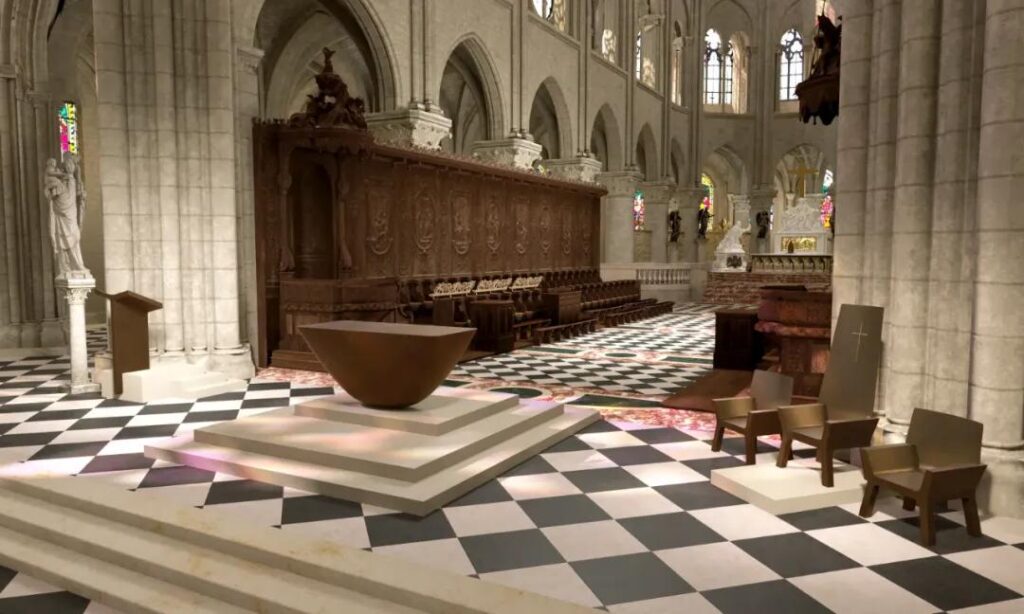
Over 1,500 chairs, pews, kneelers, and prie-dieux have been arranged in the cathedral’s worship area. The oak used echoes the “forest” of the cathedral’s roof, with lower backrests making them more comfortable and encouraging contemplation.
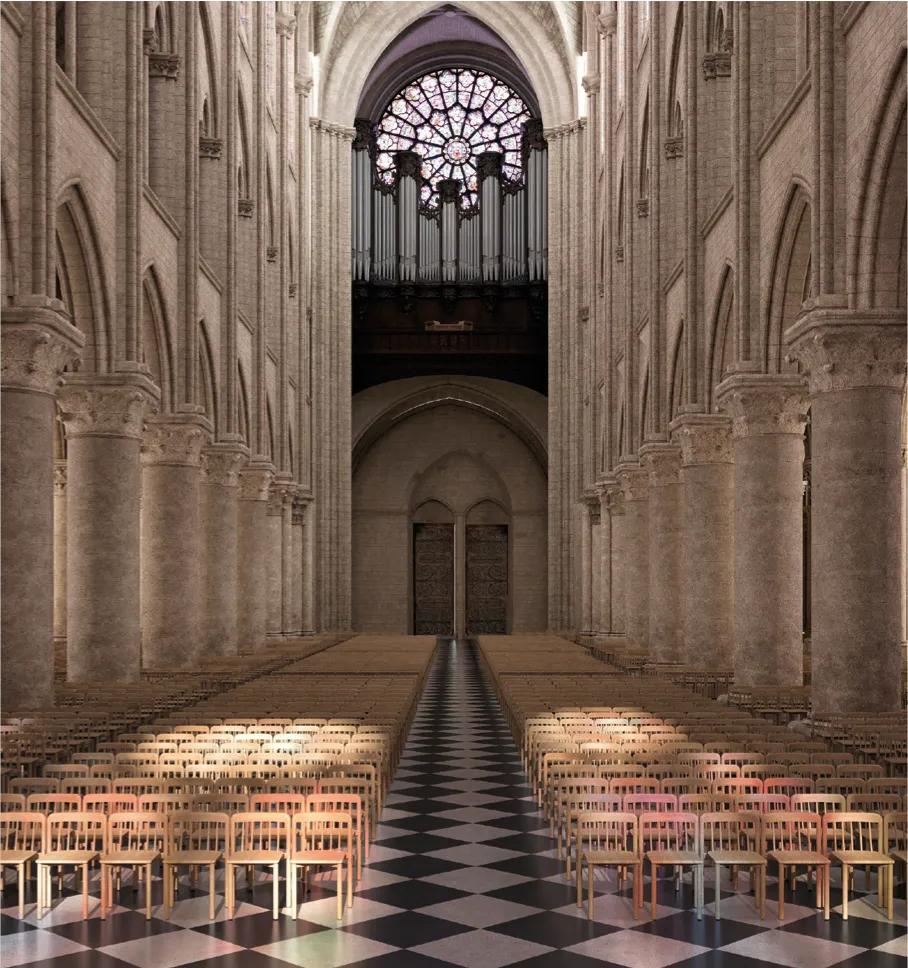
Moreover, church furnishings like the monstrance, chalices, and censers have also been redesigned and crafted by different French artists and craftsmen during the restoration, blending traditional religious symbolism with modern aesthetics.
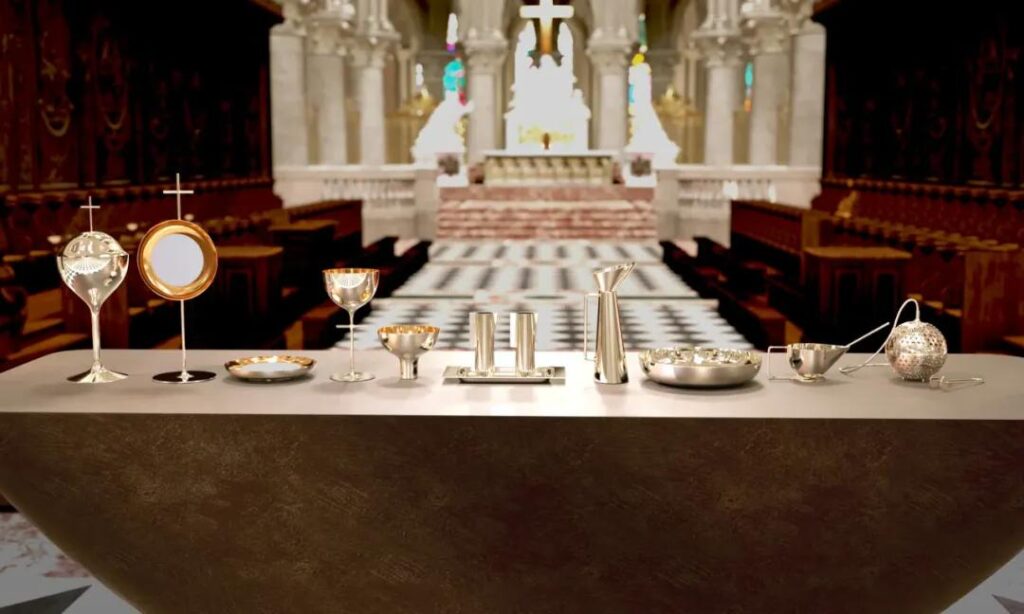
Notre-Dame has also enhanced its fire protection measures, installing an efficient surveillance system, including thermal imaging cameras and air aspiration analysis devices, capable of real-time fire detection. If anomalies are detected, an automatic mist system will be triggered to extinguish the fire.
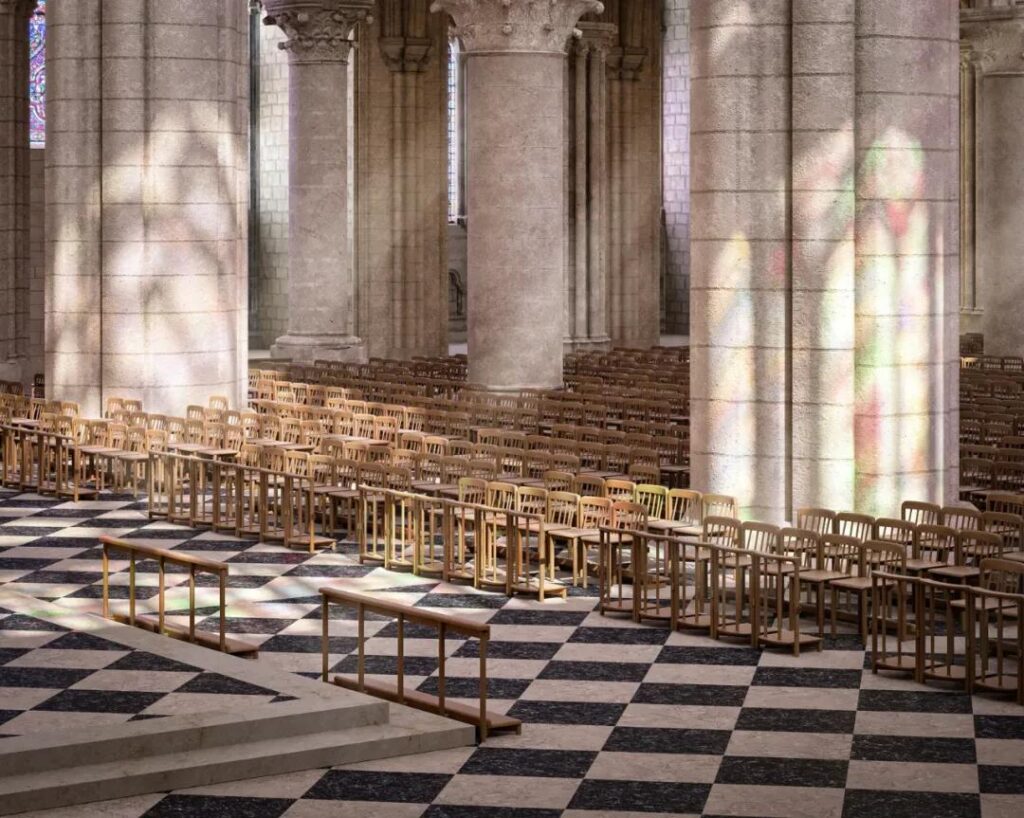
A New Symbolic Route
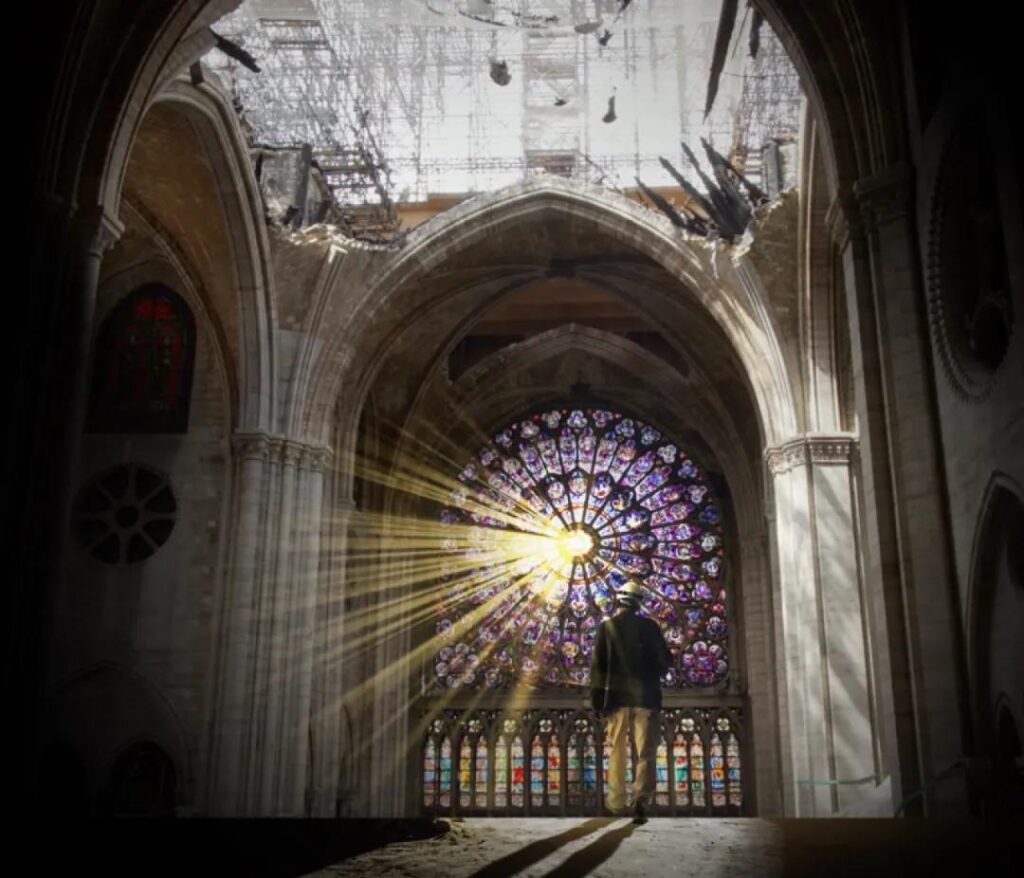
Notre-Dame Cathedral initially took 170 years to construct, from laying the first stone to the final topping out.
Over the subsequent 860 years, this building has evolved with time but has never undergone a complete renovation. Now, the restored cathedral shines with extraordinary brilliance.
For this, a new visitor route has been planned: entering through the central “Last Judgment” portal, visitors will proceed in a clockwise direction, first encountering scenes from the Old Testament and the life of Jesus before reaching the scenes of the Resurrection.
This route holds symbolic significance, guiding each visitor “from the darkness of the north to the light of the south.”
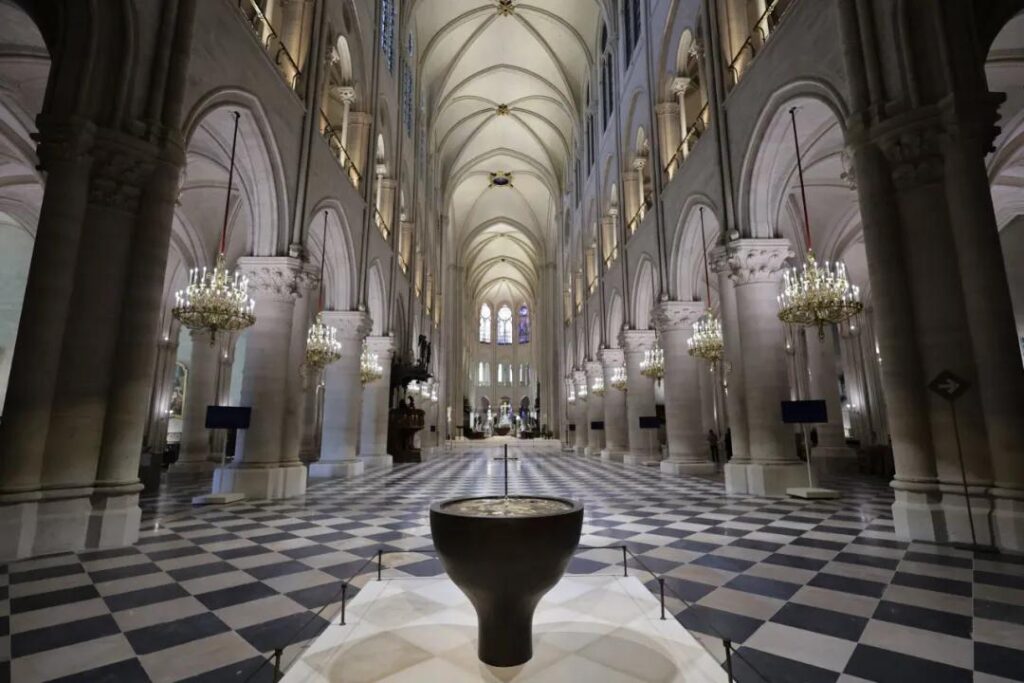
The most striking feature is the “Crown of Thorns,” this precious relic, originally kept in the treasury, is now displayed in a new reliquary designed by Sylvain Dubuisson, showcased in the central chapel.
“You will see Notre-Dame like never before. This route will be a great rediscovery journey, allowing people to understand the meaning of the cathedral’s existence,” said the bishop. “Because Notre-Dame was built for the glory of God.”
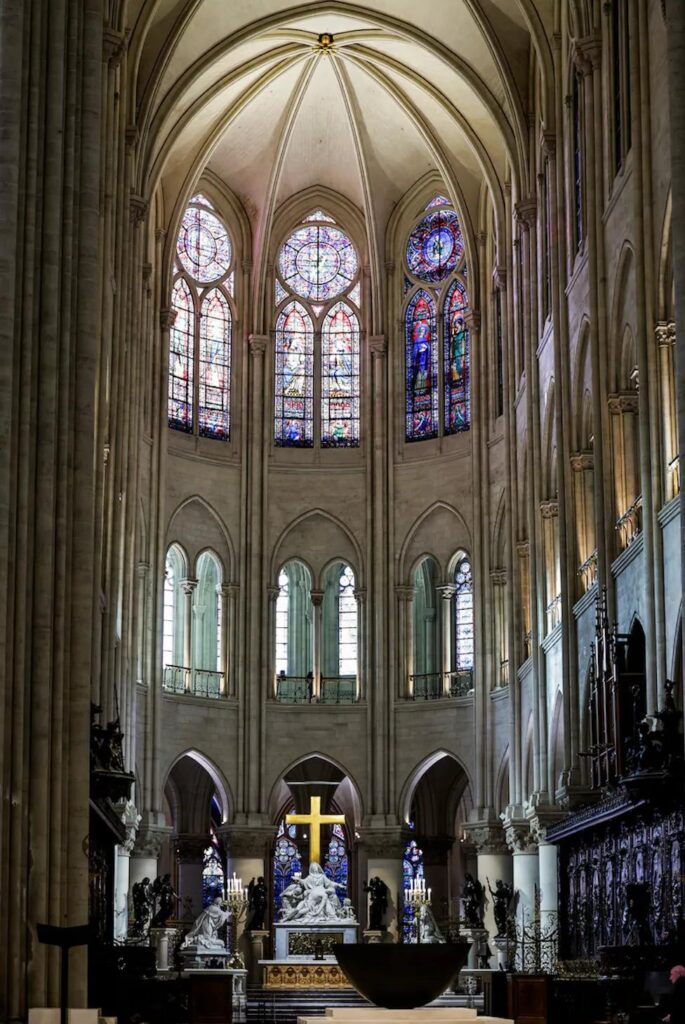
Hope and Faith
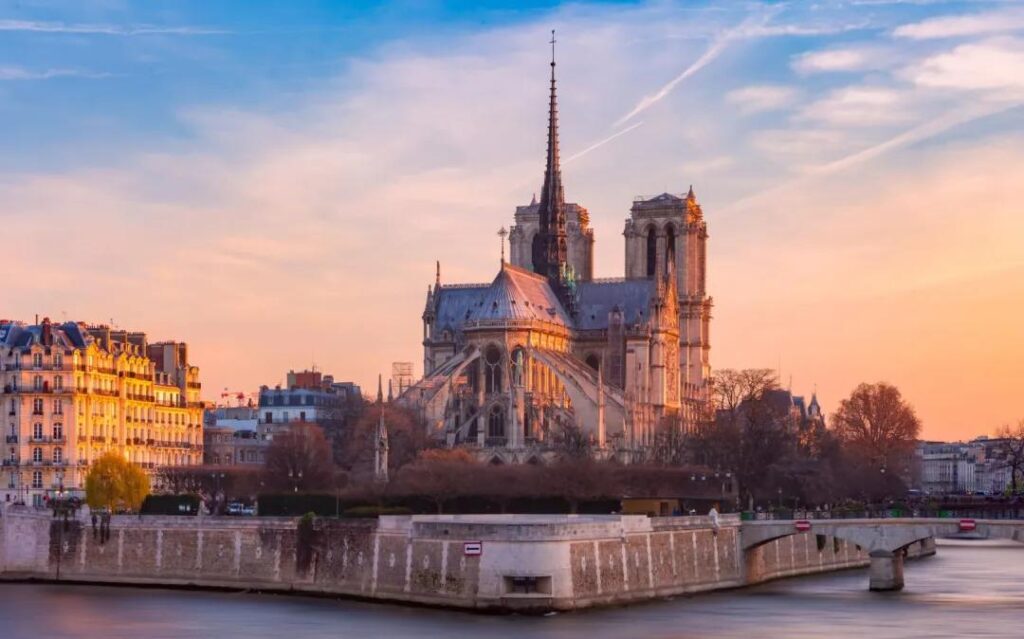
Now, with Notre-Dame reopening, this place, described by historians as “where serfs were freed, feasts were held, the poor found refuge, contracts were made, and gifts were given before a journey,” is once again handed over to the people. The long restoration process after the fire has been a journey full of challenges and hope. From the severe damage caused by the fire to its reopening, it showcases the indomitable spirit and unity of humanity in the face of adversity.
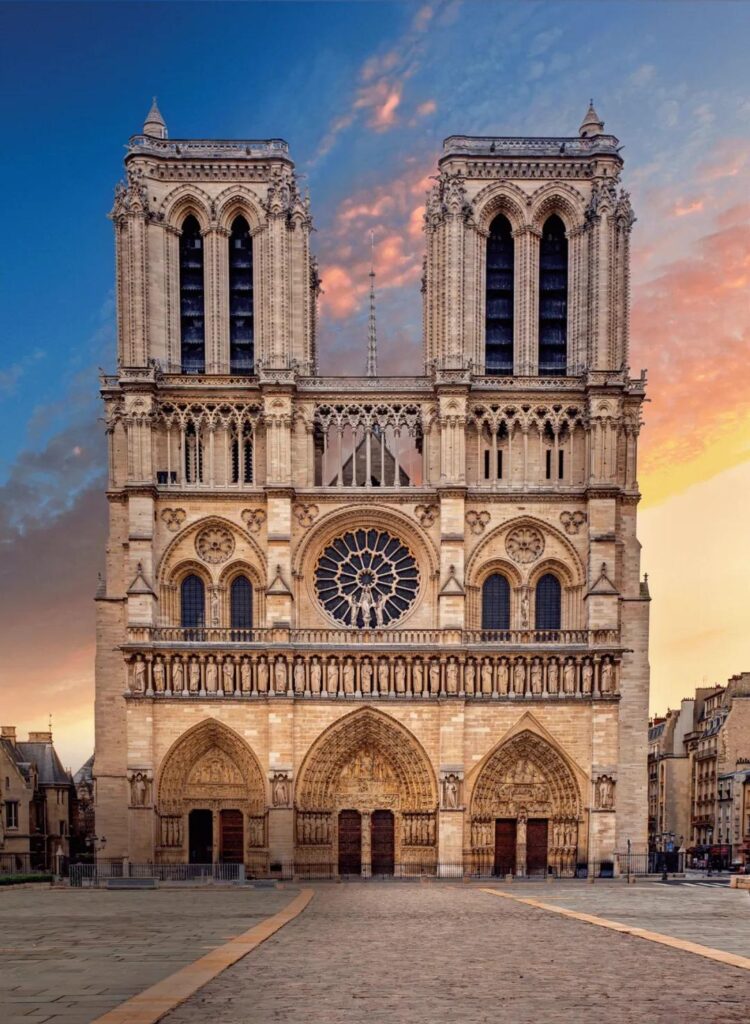
This is not just the rebirth of a building but the elevation of human cultural spirit. In these uncertain times, let us look forward to this great cathedral standing once again on the banks of the Seine, becoming a new symbol of hope and faith.
